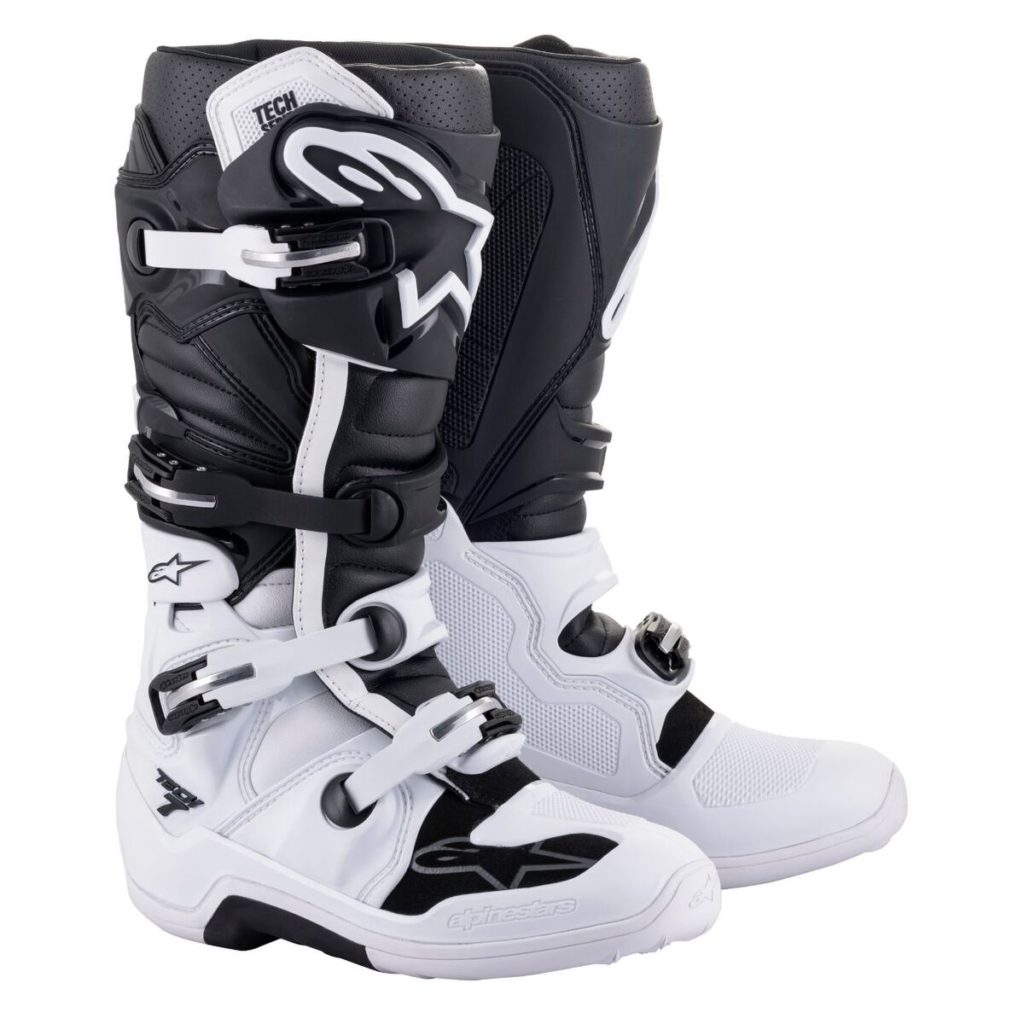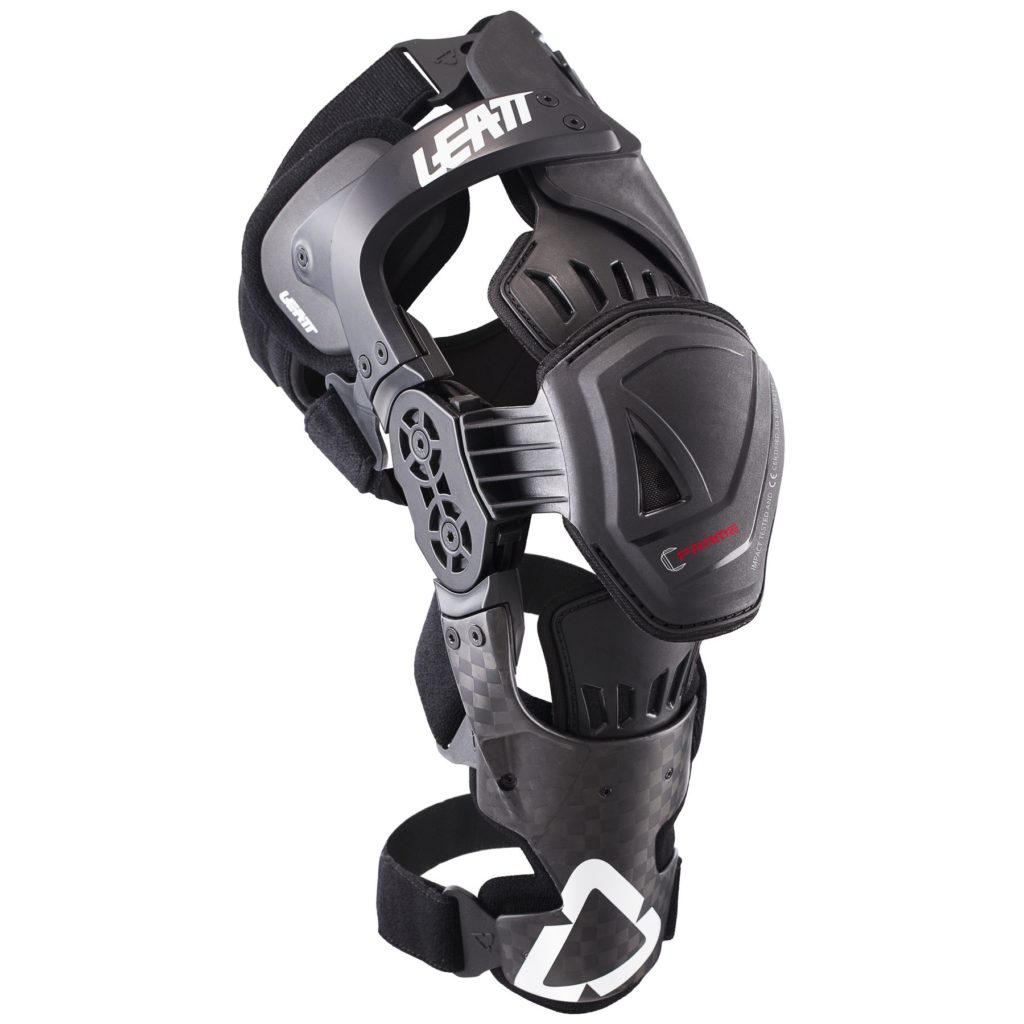So how do you choose each piece of gear? In this post, I’ll give a high level overview of each piece of riding gear: helmet, jackets, gloves, boots, and pants. I’ll also point out some additional pieces of gear that you might want to consider in addition to the standard kit.
For each piece of gear, I’ll break down how it protects you, what you should expect to spend for beginner gear, and any specific considerations to keep in mind. I’ll also include examples for multiple of styles for each piece of gear. This won’t be a comprehensive guide and I’ll refrain from making specific recommendations, but this should be a good survey of what to shop for when you’re ready to buy gear.
Images are all from product pages on revzilla.com unless otherwise noted.
Overview
As covered in the BRC (and I elaborated on in my “How Gear Protects You” post), riding gear protects you from crashes, from the elements, and can aid in visual conspicuity. Crash protection includes both abrasion resistance (slides) and impact protection (tumbling and rolling). Weather protection can mean keeping you cool when it’s hot (sun protection and ventilation) as well as keeping you warm when it’s cold and/or wet (wind and waterproof). It’s a good idea to buy gear that includes reflective accents, but it’s even better to wear bright colors that contrast to outline the human form.
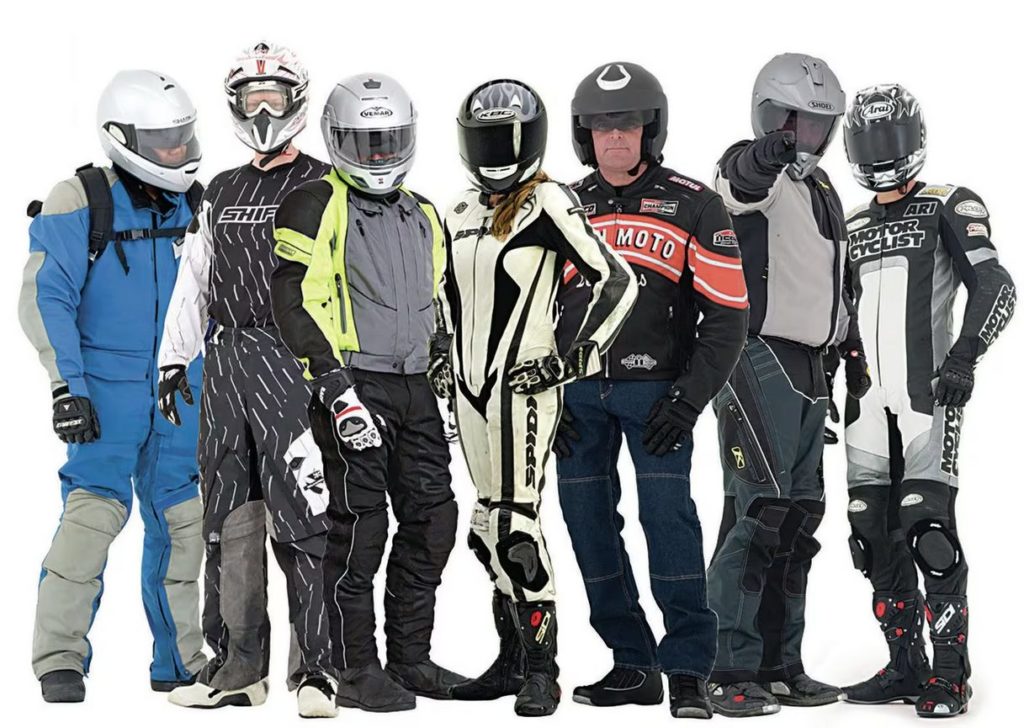
It’s important to remember that no gear can protect you from every crash. If you hit a solid object at 60 mph or get crushed by a car, no helmet or gear in the world can absorb enough energy to protect you (and even if it could, you wouldn’t have the mobility to comfortably operate a motorcycle). Luckily those types of crashes are quite rare, and the vast majority of motorcycle crashes involve coming off the bike and tumbling, rolling, and sliding to a stop. It’s in these common crashes that gear can mean the difference between walking away to deal with insurance or dealing with medical, mobility, and quality-of-life issues for the rest of your life.
Riding gear is most often made of either leather, synthetic textiles like ballistic nylon (Cordura) and aramids (Kevlar), or some combination of both. Leather offers the most abrasion resistance but it’s heavier, more expensive, and less versatile. Synthetic textiles are lighter, cheaper, and offer manufactures the most flexibility in incorporating features like ventilation and waterproofing. Combining both materials can get you the best of both worlds, with the main chassis being made of textiles and leather used to reinforce key impact areas.
Mesh gear is available for riding in high temperatures if you won’t be moving fast enough for traditional vents to keep you cool. Just be aware that the mesh panels on most entry-level mesh gear won’t be abrasion resistant, just the reinforced impact areas.
I’d also encourage you to stop by a physical store like your local Cycle Gear or a well-stocked dealership to actually try on the gear and ensure a good fit. Avoid shopping on sites like Amazon or Ebay for gear, as it can be hard to trust the supply chain and counterfeits are common. I’d stick to reputable sites like Revzilla, Cycle Gear, J&P Cycles, Rocky Mountain ATV/MC, manufacturers’ official websites, or in-person stores & dealerships.
When shopping, consider that gear can be inexpensive, protective, and comfortable; any gear is going to be a trade-off between the three. As a beginner, I’d focus on affordable, protective gear from reputable companies. Comfort features become important when you’re riding more often, over longer distances, or in more extreme situations while any safety-rated motorcycle gear from a reputable manufacturer will protect you in a crash. More expensive gear buys you durability, comfort, and convenience features, but there are diminishing returns as you spend more.
For women: It’s an unfortunate reality that women’s gear lags behind men’s gear. Some manufacturers (like Rev’it, Alpinestars, and Klim) are waking up to the discrepancy and doing a much better job of designing gear for women’s bodies, but please be aware that you might need to try on a lot of gear before finding something that fits you well. You’ll often find better selection in the mid-range and above from these manufacturers than in the entry-level lines. Revzilla (and it’s sister stores in the Comoto family) have started to curate women’s collections that make a great starting point.
Helmets
Helmets are the most important piece of equipment for protecting you from serious injury. Every head injury is serious and can lead to issues with mobility & coordination and even memory & cognitive issues. A helmet isn’t a get-out-of-jail free card for all crashes, but even a relatively mild motorcycle crash can lead to your head & face hitting the ground repeatedly from multiple angles.
Expect to pay $100-$200 for a cheap but safe starter helmet.
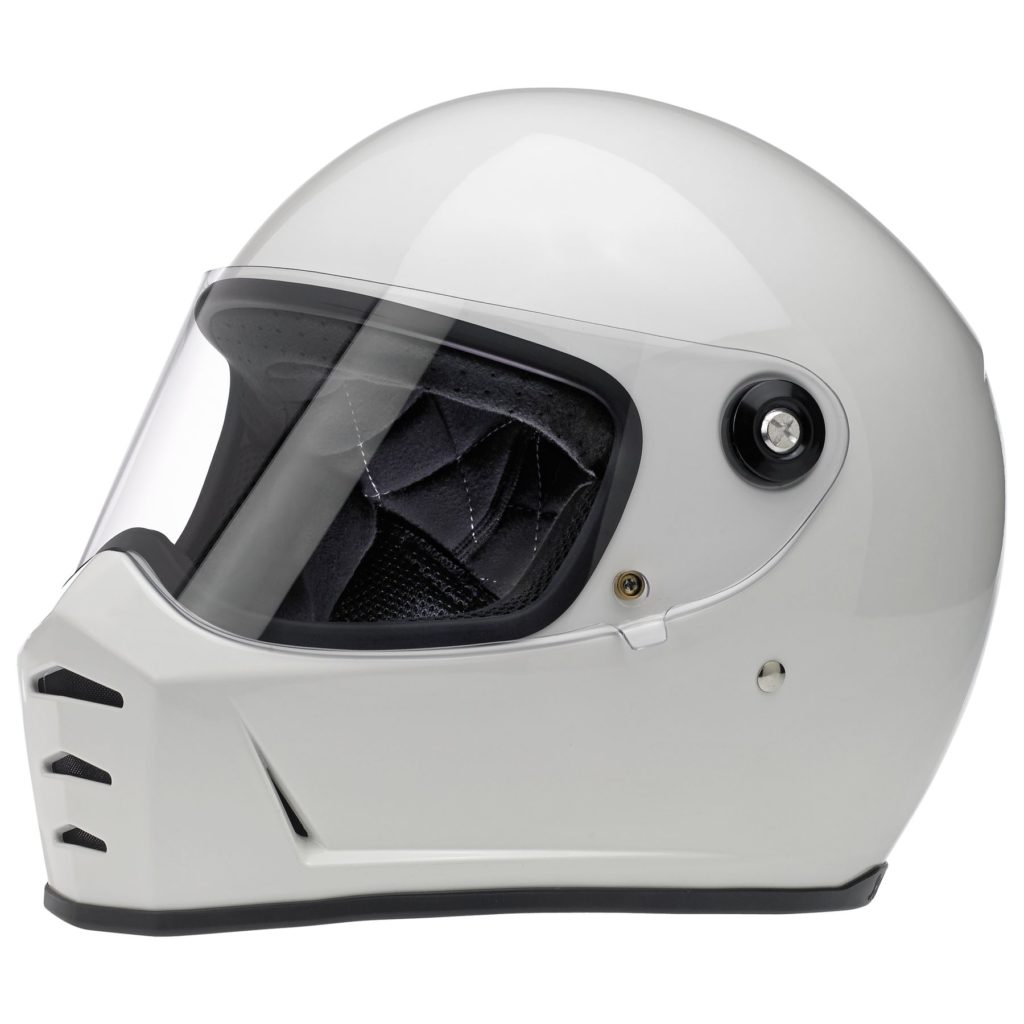
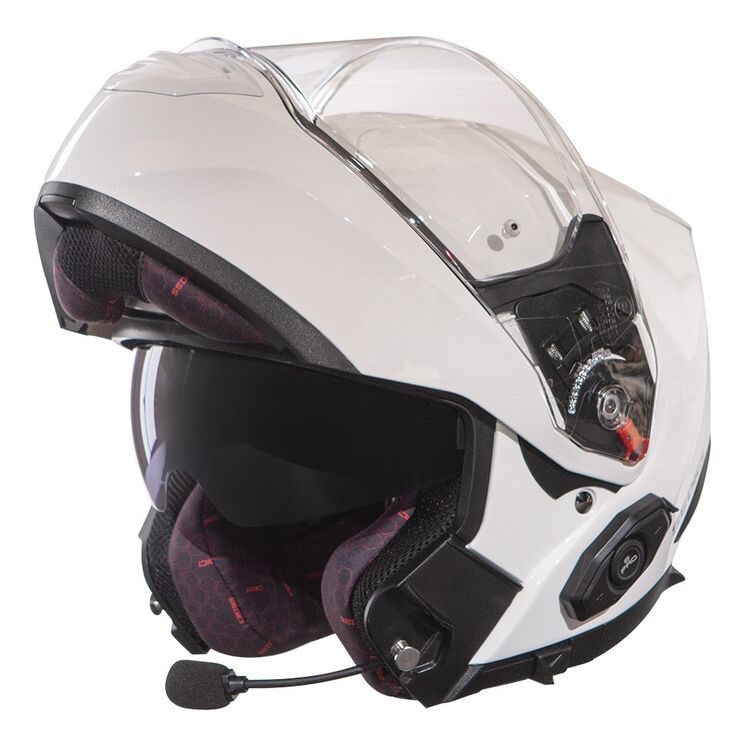
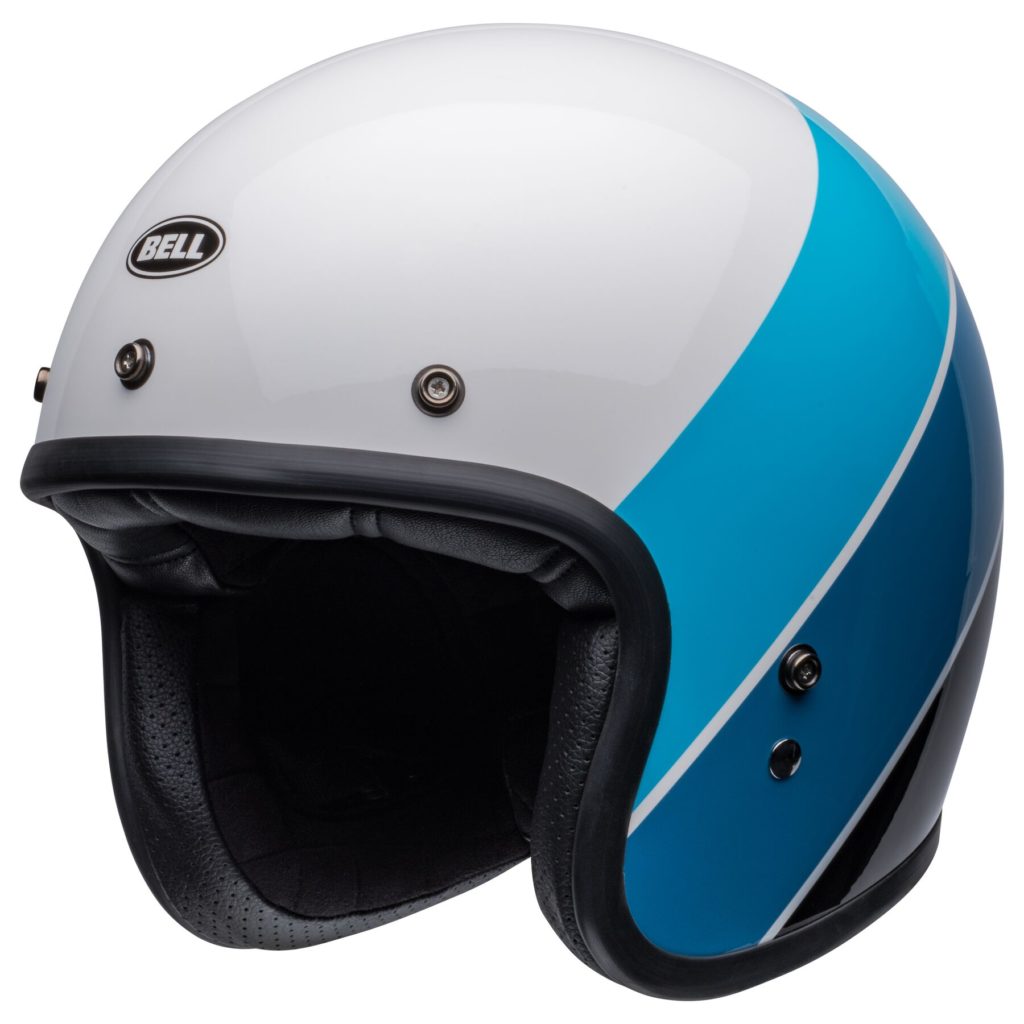
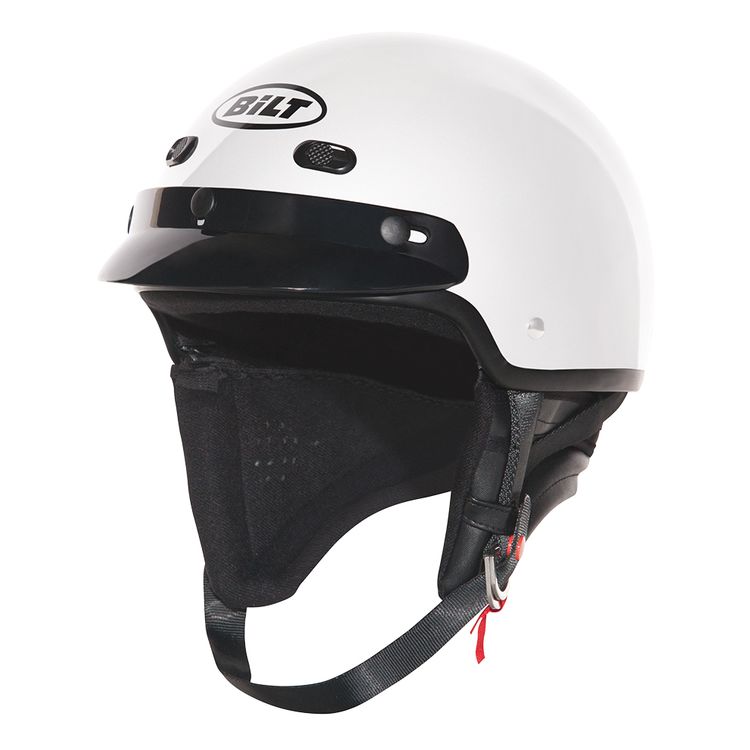
Helmets can offer varying amounts of coverage, and what you go with is up to your own risk tolerance and comfort requirements. The DOT helmet standard is a bare minimum for a helmet to be legally sold in the US, but consider looking for a helmet that has the additional European ECE certification (or the Snell/FIM racing standards). The DOT standard is fairly outdated and is self-enforced by manufacturers, while the ECE standard is much more modern and requires independent lab testing.
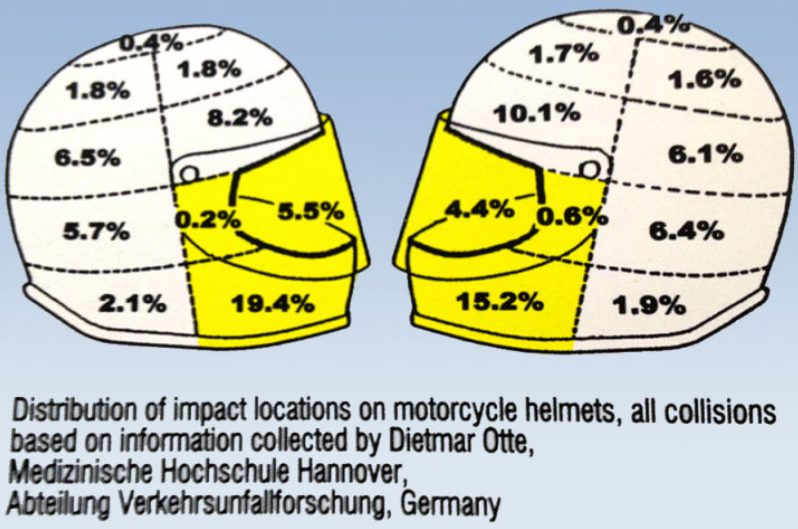
Consider this breakdown of impact locations on motorcycle helmets in real crashes when deciding what type of helmet to wear. Notice that about 45% of recorded impacts are to the chin & face, areas only covered by full-face helmets. Include the the back of the head and neck in the sum and it’s clear that a half-helmet will only protect you from about 40% of head impacts, and those impacts are in places where your skull is the thickest.
In terms of comfort, consider riding through a rainstorm or getting hit in the face by a bugs at highway speeds (both hurt). Wind noise on a motorcycle is also loud enough to cause permanent hearing damage, and full face & 3/4 helmets can actually aid in your ability to hear traffic by protecting your ears from the wind. Full face helmets don’t just protect you in a crash, they make every aspect of motorcycling more enjoyable and can buy you extra hours in the saddle.
I’d also recommend avoiding buying a used helmet, especially from a stranger. Damage to the impact-absorbing core can be invisible and it’s not work risking your life & cognitive function to save $100.
Eye Protection
Full-face and some 3/4 helmets come with eye protection built in, but if you’re riding with another helmet style or just like to ride with your visor open, most states require you to wear eye protection. While cheap sunglasses or your prescription eyeglasses are a bare minimum, please consider something with large, impact resistant lenses. Strong winds will make unprotected (or under-protected) eyes tear up, which affects your visibility, especially cold winds. Dust and other debris can also make their way into your eyes, which can range from a minor irritation to permanent vision loss.
You can find motorcycle-specific eye wear that has foam to seal around your eyes or thin stems designed to fit comfortably under a helmet, but any safety glasses will do just fine. Dirt bike goggles are also an option for the street and flow a huge amount of air while keeping your eyes very well protected — some riders in hot climates swear by them.
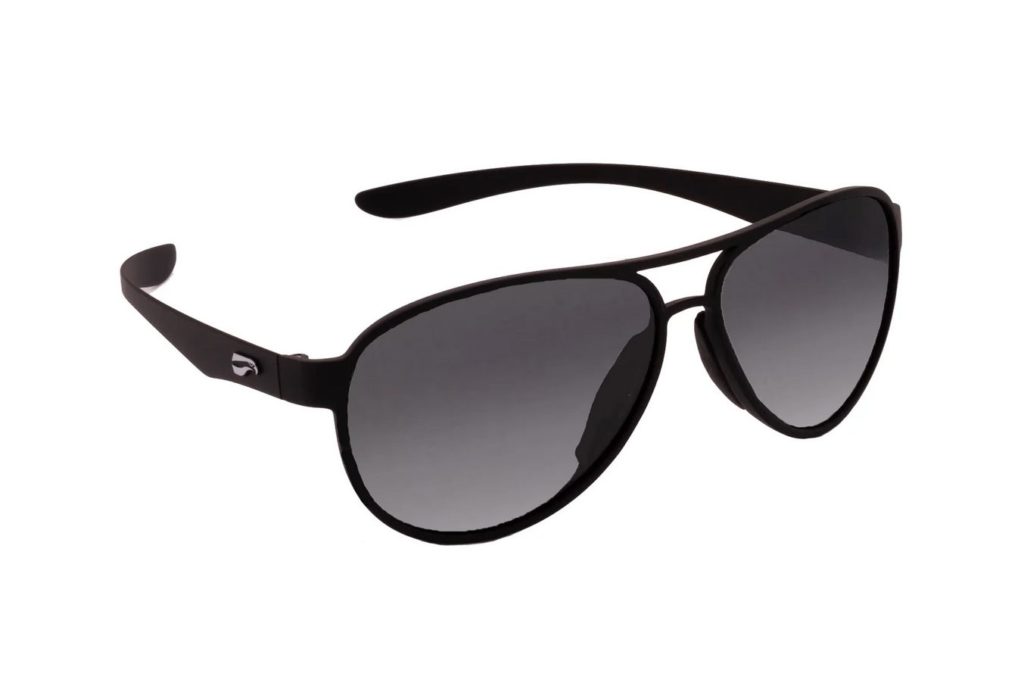
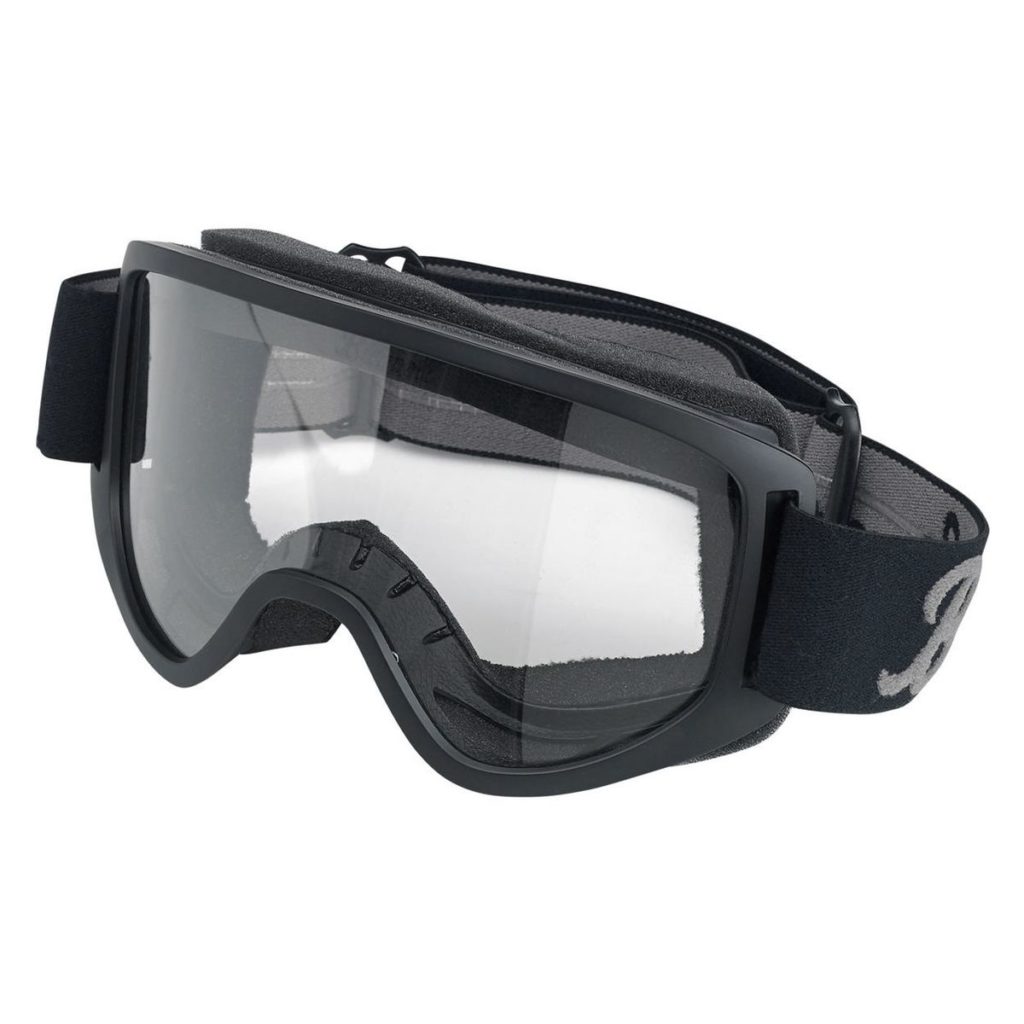
Apparel
Jackets
Jackets protect your torso & arms from abrasion and impact, housing impact armor for your elbows, shoulders, and spine. They’re also one of the most important pieces of gear for weather protection, since your body’s temperature regulation is directly tied to your core temperature. Whatever your style preferences are, you can generally find a jacket that compliments it. A vented, wind-proof jacket offers the most flexibility across large temperature ranges, but consider a mesh jacket if you are going to be doing a lot of riding in dense, urban environments or in extreme humidity.
Most beginner-friendly armored jackets start around $120, but you might need to spend a little bit more to get waterproofing and good ventilation.
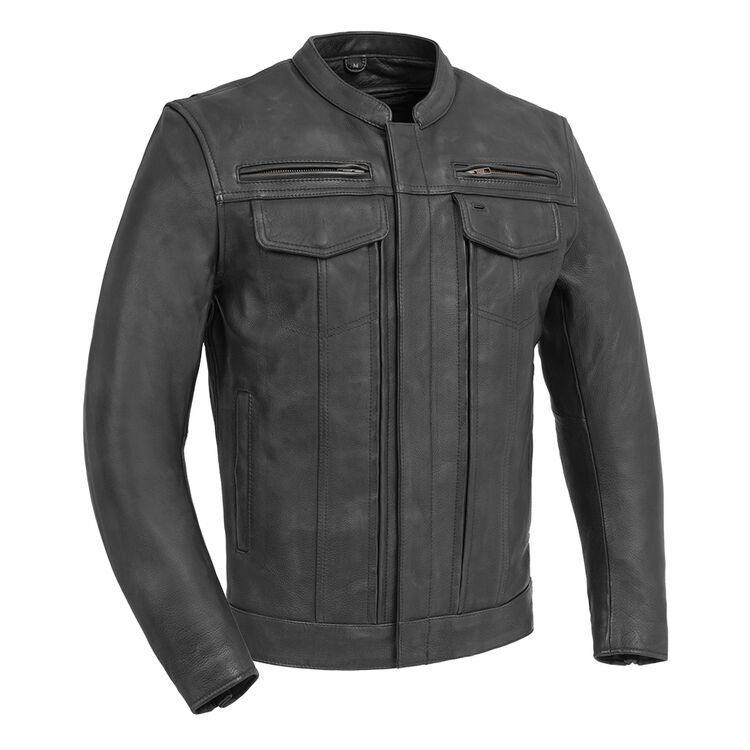
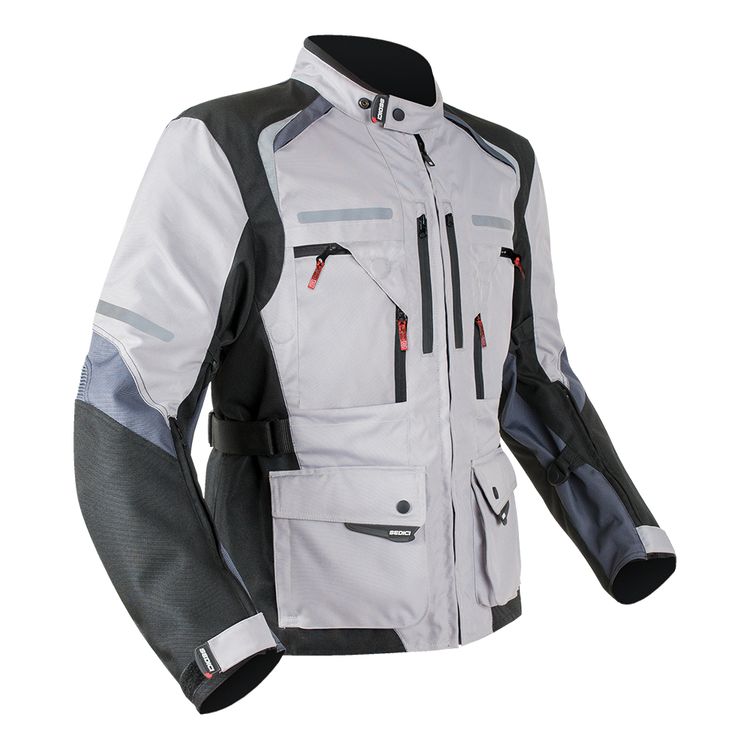
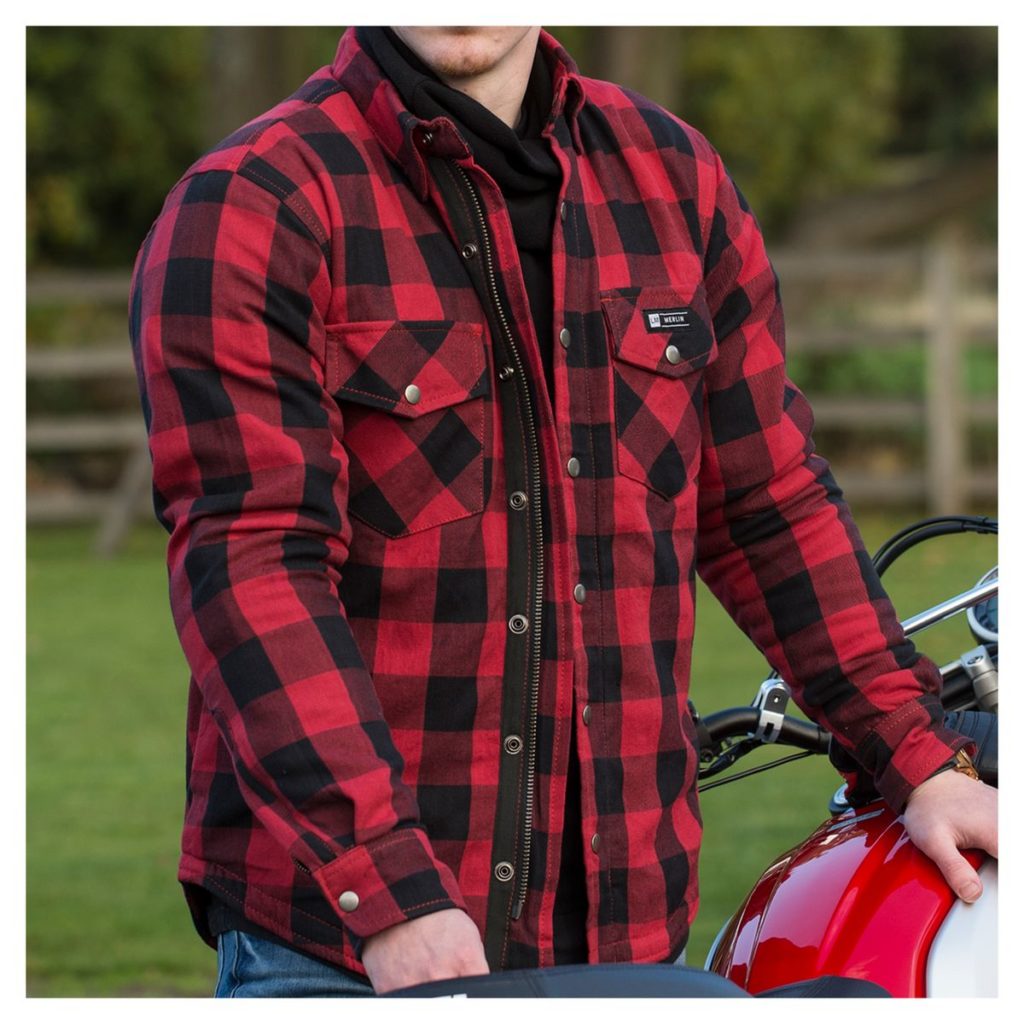
Leather jackets offer a timeless style, but they can be heavy and hard to waterproof. Textile jackets can be just as protective while being lighter weight and more comfortable in varied environments, but you trade off a little bit in the jacket’s life expectancy compared to leather (assuming the leather is property cared for).
One important note: many manufacturers sell jackets with empty spine armor pockets or, even worse, flimsy pads to “simulate the fit” of spine armor. This is generally done as a cost saving measure, so make sure to read the descriptions & tags carefully to ensure that you’re getting the armor you think you are.
Pants
Pants are often overlooked because the most serious injuries are to your head and spine, while the most common injuries are to your hands, feet, wrists, and ankles. Before writing pants off, consider how much of your skins is on your legs (a little under 40% between both legs) and about how debilitating a knee or hip injury would be for your daily life. Pants do much the same job as your jacket; they protect your legs from road rash and are used to house knee and hip armor.
Entry-level pants are generally about the same cost as entry-level jackets, starting at $120. At higher levels, pants tend to be slightly cheaper than jackets.
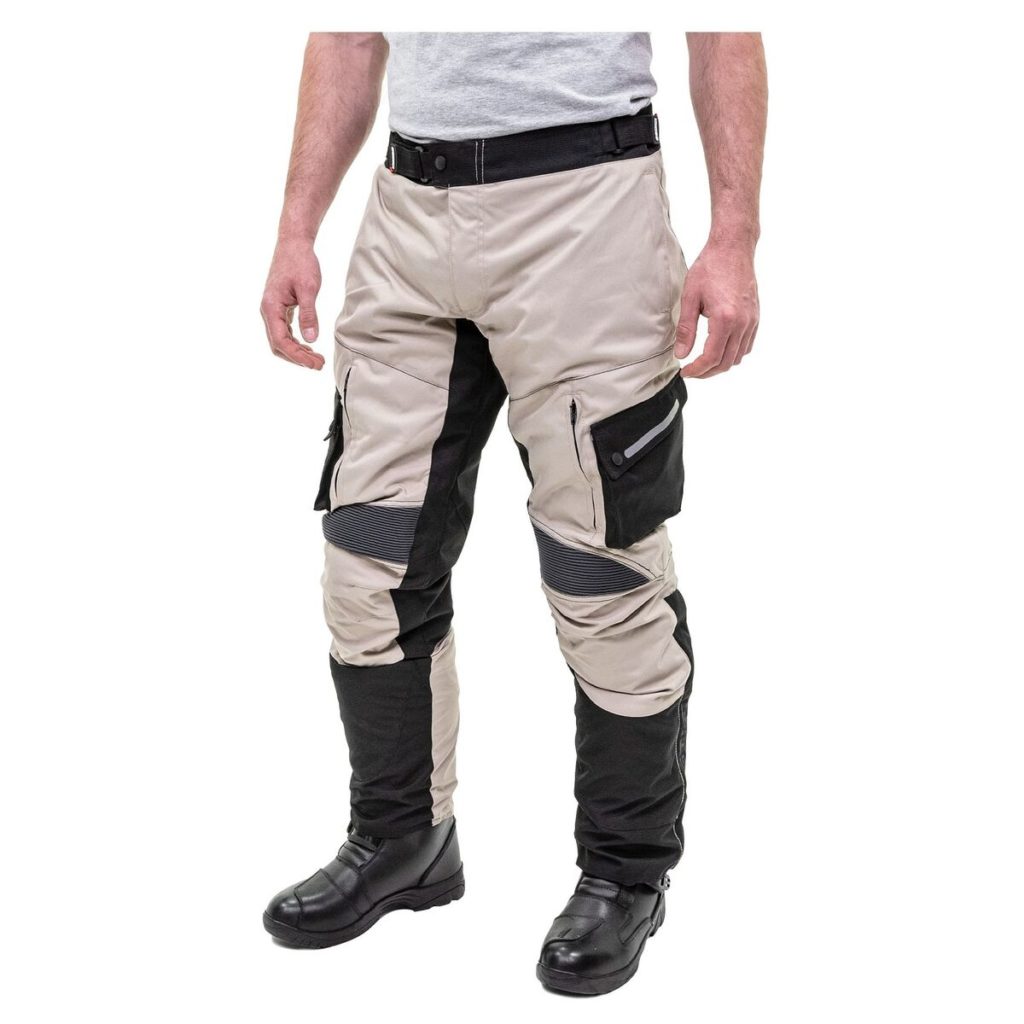
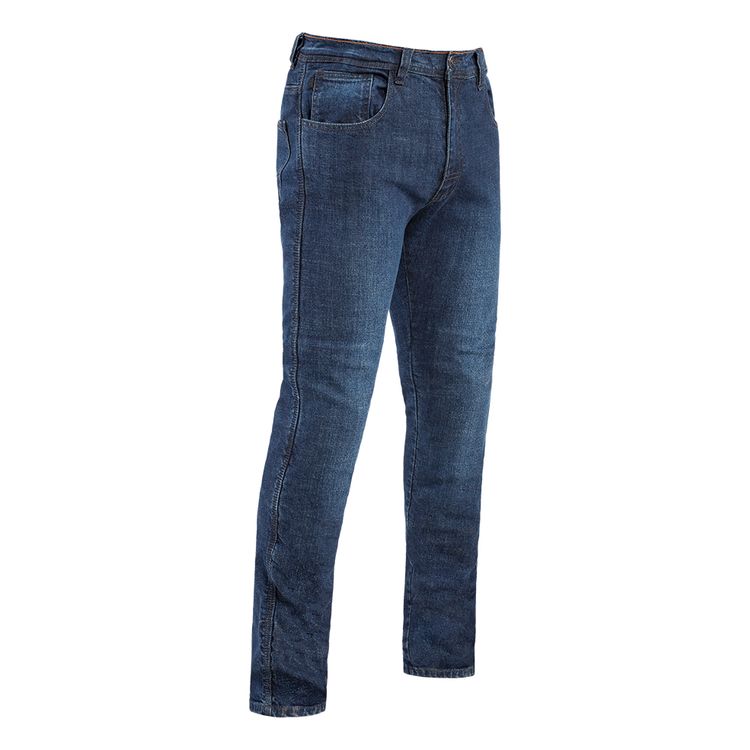
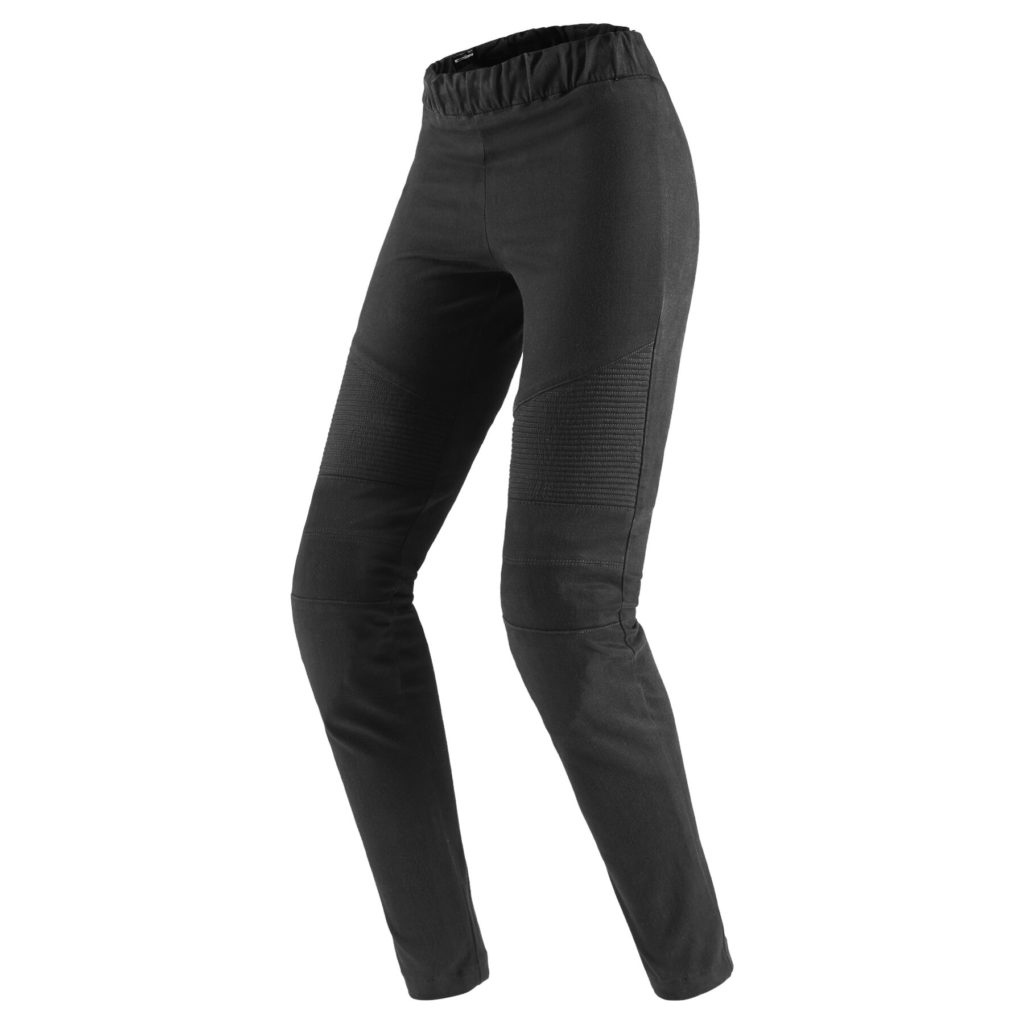

Manufacturers have gone out of their way to make casual-looking riding pants that can pass as jeans, khakis, or even joggers and leggings so you can blend in when you get to your destination. You can still go with leather or technical pants if you’re riding just to ride or are on a longer trip. Alternatively, over-pants work great for commuting so you can wear them over your work clothes/uniform. Look for all the same technical and comfort features you’d look for in a jacket (ventilation, water-proofing, or mesh where appropriate).
One-Piece Suits
While I wouldn’t consider them entry-level, one-piece suits can be convenient for commuters and touring riders and one-piece leathers are often required for track days. They may be worth considering investing in as your riding progresses. One-piece suits offer the same core functionality of abrasion resistance and armor as the classic jacket & pants combo, but with more structural integrity and weather resistance. If sliding feet-first, even a properly fitted jacket can ride up and expose your back. Sizing can be a bit trickier since any arm movement will pull up on your crotch/legs, so trying on before riding is essential.
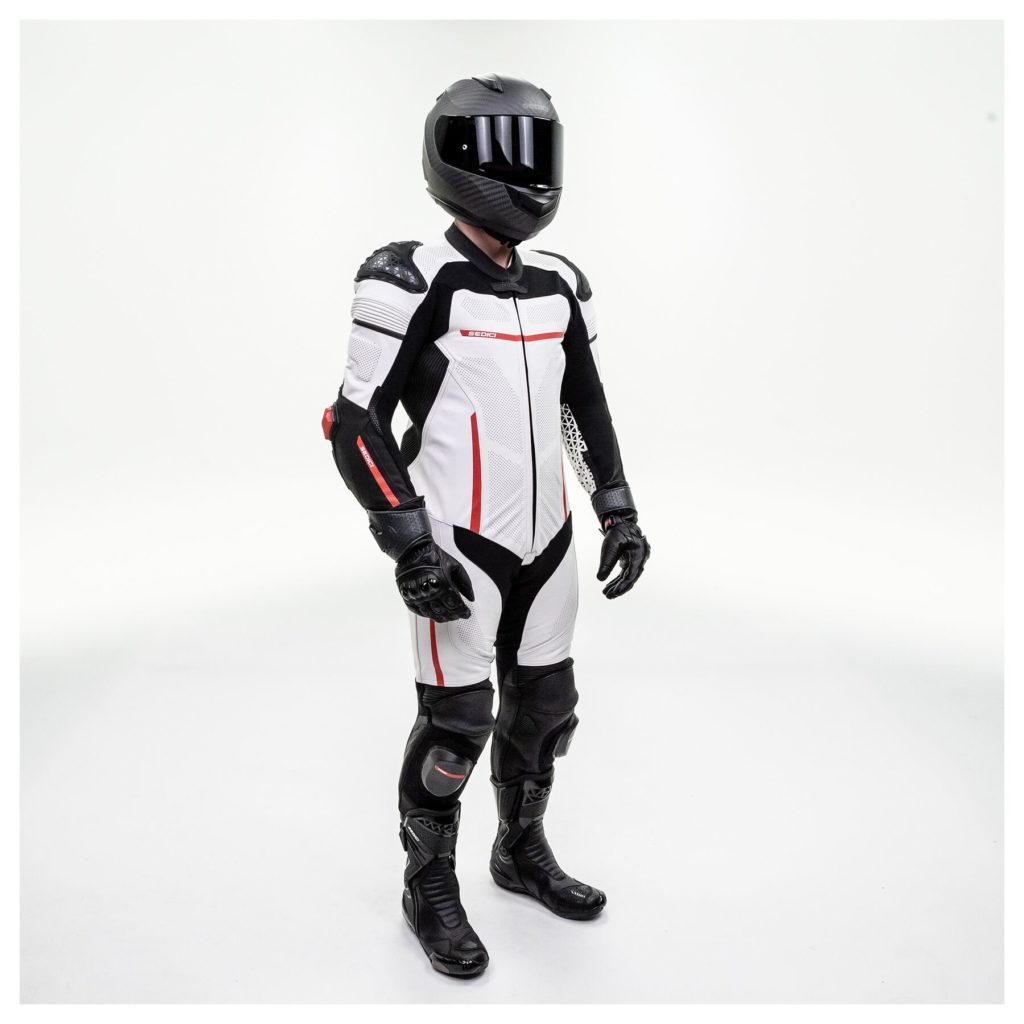
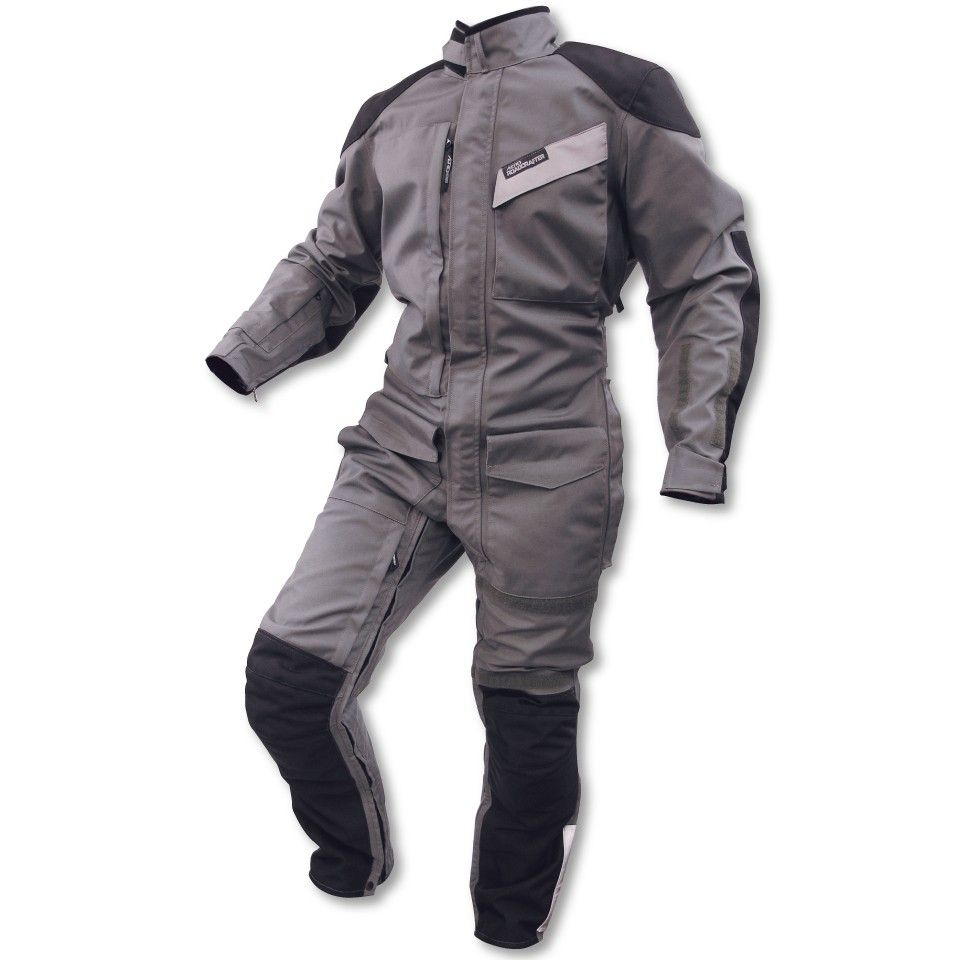
Race suits are usually constructed of leather and feature hard sliders on the knees, elbows, and shoulders to reduce friction in a slide and act as feelers at extreme lean angles.
Commuting & touring suits generally fit over your street/work clothes, which makes them a good choice if you want to avoid changing when you get to work. The one-piece design also limits the places where water can sneak when riding in downpours, making them ideal for long-distance riders and all-weather commuters.
Hands & Feet
Gloves
Gloves are important for a variety of reasons. People tend to splay out their hands to protect themselves in a fall, so hands & wrists are the most commonly injured body parts in crashes. Gloves help you maintain positive grip when your hands get sweaty in the heat. They tend to be the part of our body most exposed to the wind, and, because they have so much surface area, are far from our core, and have relatively little fat, hands are the first part of our body to lose heat. Gloves can also protect us from vibration and prevent fatigue.
You can get started with a solid pair of armored riding gloves for around $30.
I’d strongly recommend against fingerless gloves — while the ventilation might be tempting, think about how are it would be to operate your brake & clutch levers if your fingers get scraped up against the pavement or if they go numb when the temperature drops.
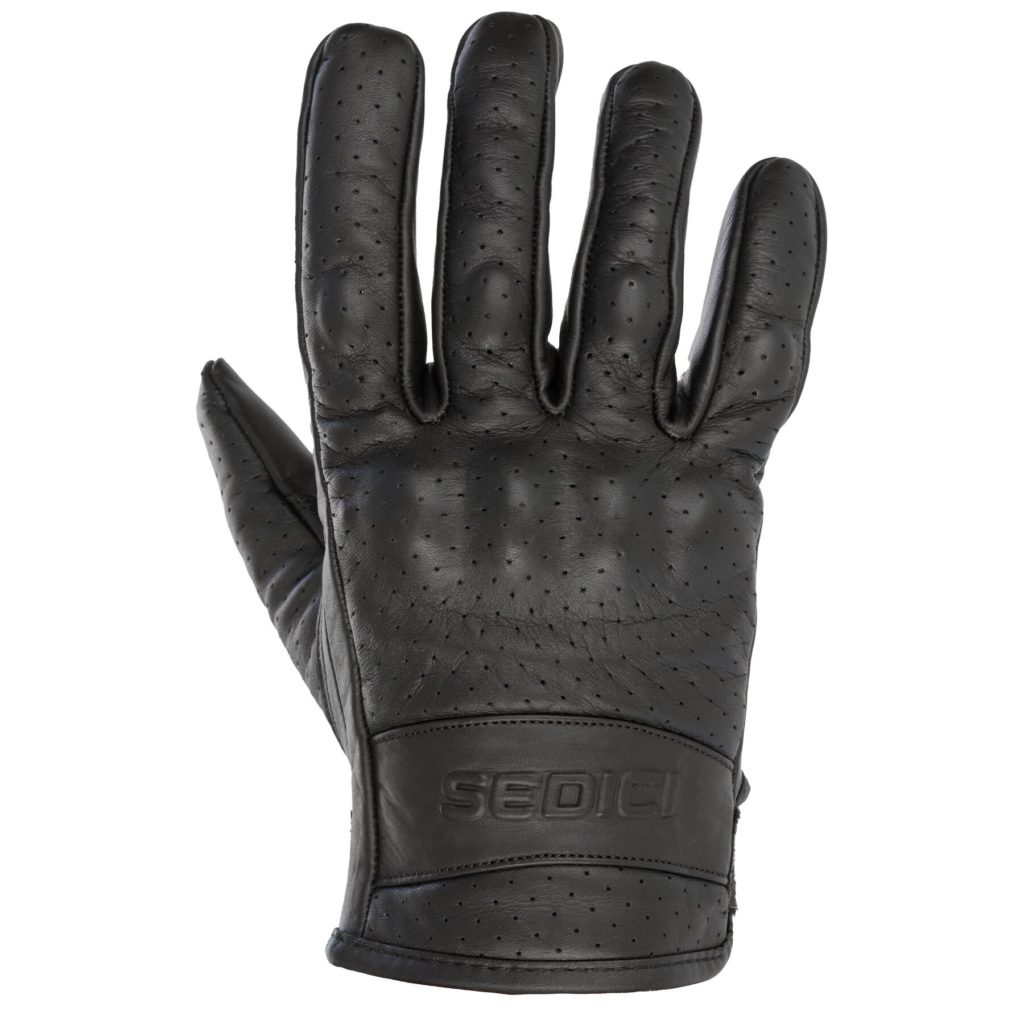
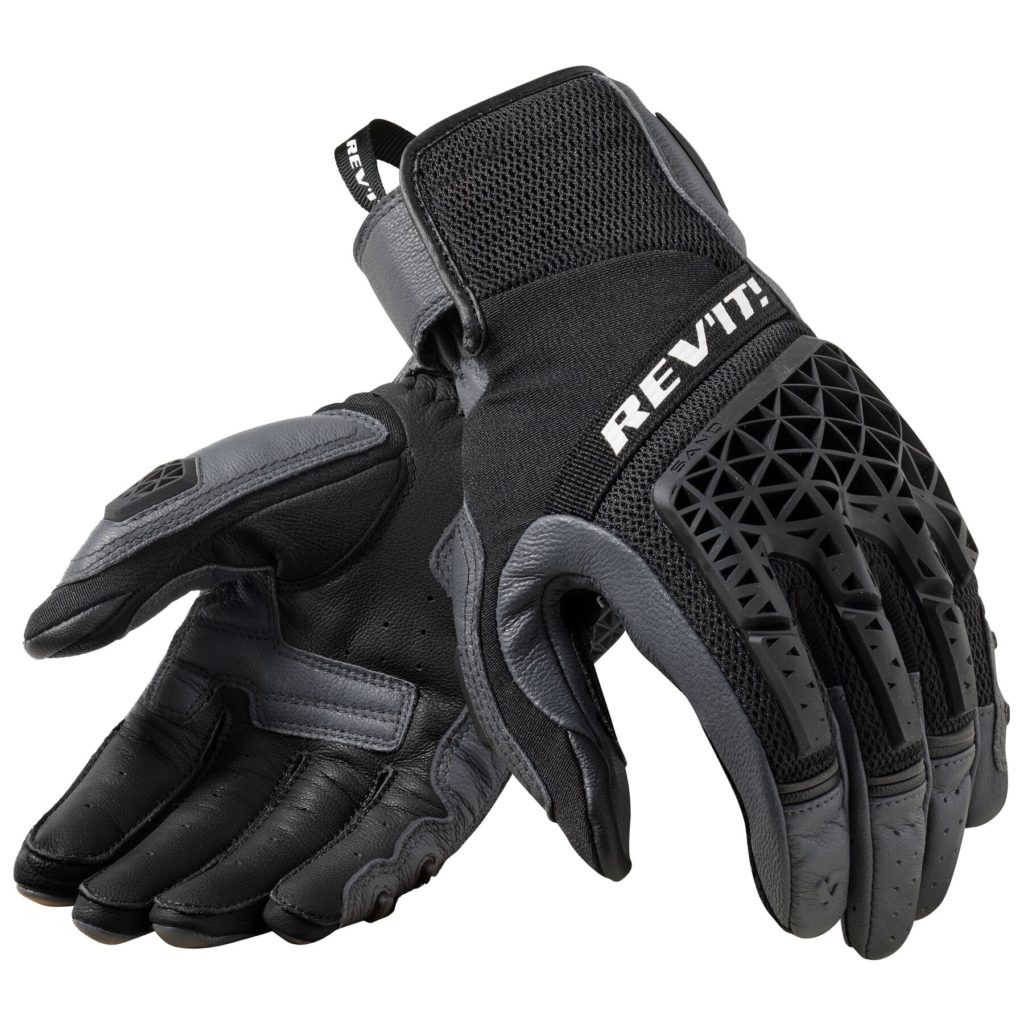
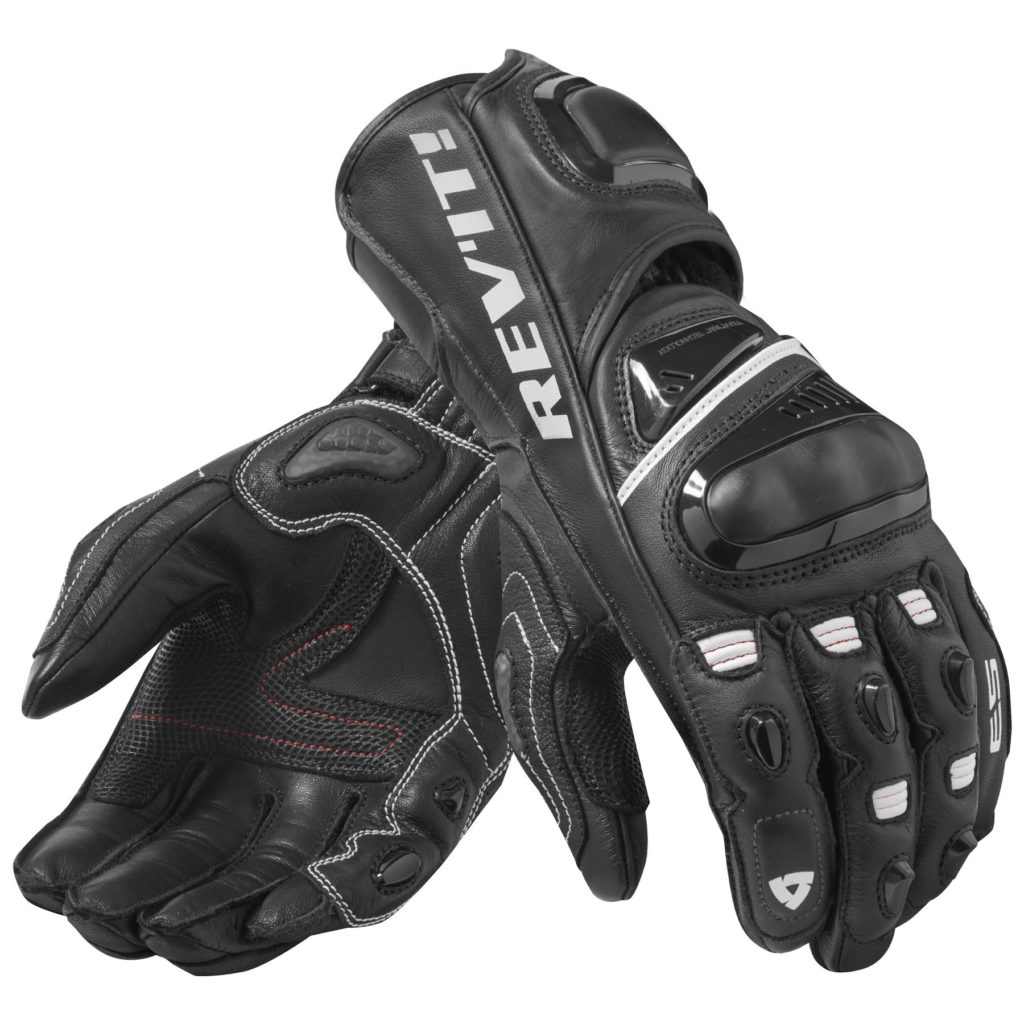
Look for gloves with extra padding on the palms and impact armor at least on the knuckles. Many gloves also have hard sliders at the base of the hand or on the wrist, which can help reduce friction in a slide. Even if the main body of the glove is textile, look for leather at least in the palms, as this is the area most likely to hit the ground in a crash. You should weigh the benefits of mesh panels and/or perforated leather against wind protection and waterproofing for the weather conditions you’ll be riding in. Look for gloves with smartphone compatible finger tips if you plan on using your phone for navigation.
More than any other piece of gear, most experienced riders have several pairs of gloves for different riding conditions. Don’t be afraid to experiment with multiple pairs.
Boots
After hands, feet & ankles are the most common body part injured in crashes. Riders will instinctively put their inside foot out to “dab” and try to prevent falling over, but the weight of the motorcycle and speeds involved lead to rolling their ankles and broken bones. Boots protect you by taking those forces and moving them from your ankle up to the stronger bones of your leg. Even if you still break your tibia or fibia, but that’s only 1-2 large bones to heal instead of the 7 tiny bones in your ankle. Riding boots also have stiff soles to help prevent fatigue, reinforced toes to help with shifting, and armor over your ankles to protect them in slides and tumbles.
Decent pairs of riding boots & shoes generally start around $80.
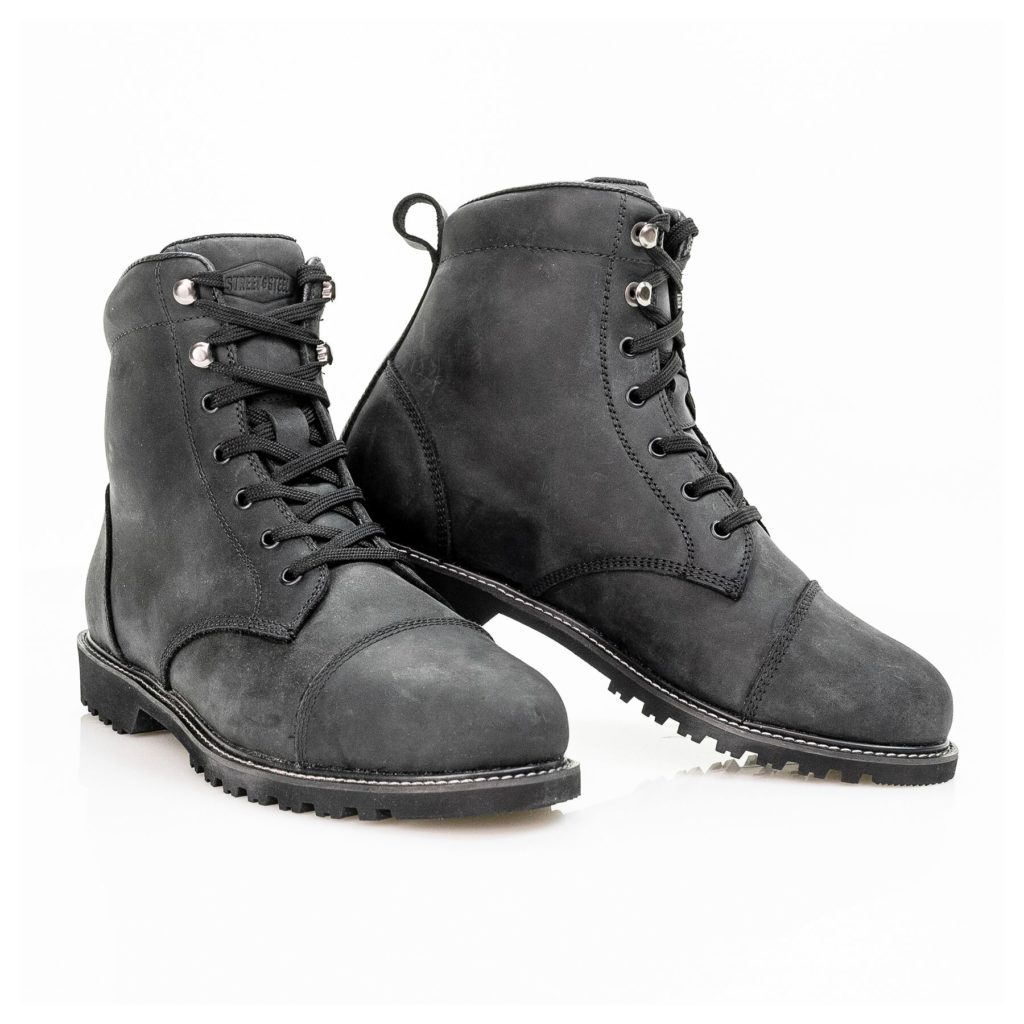
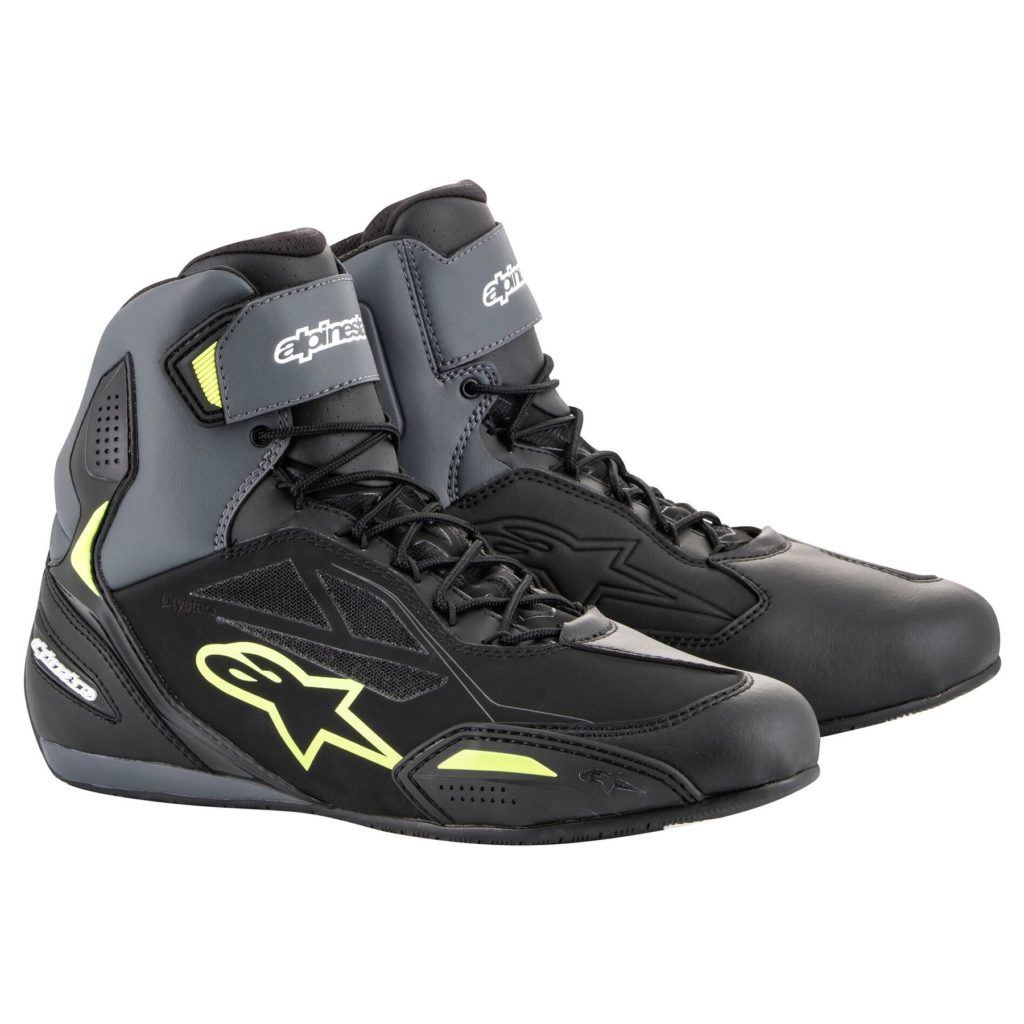
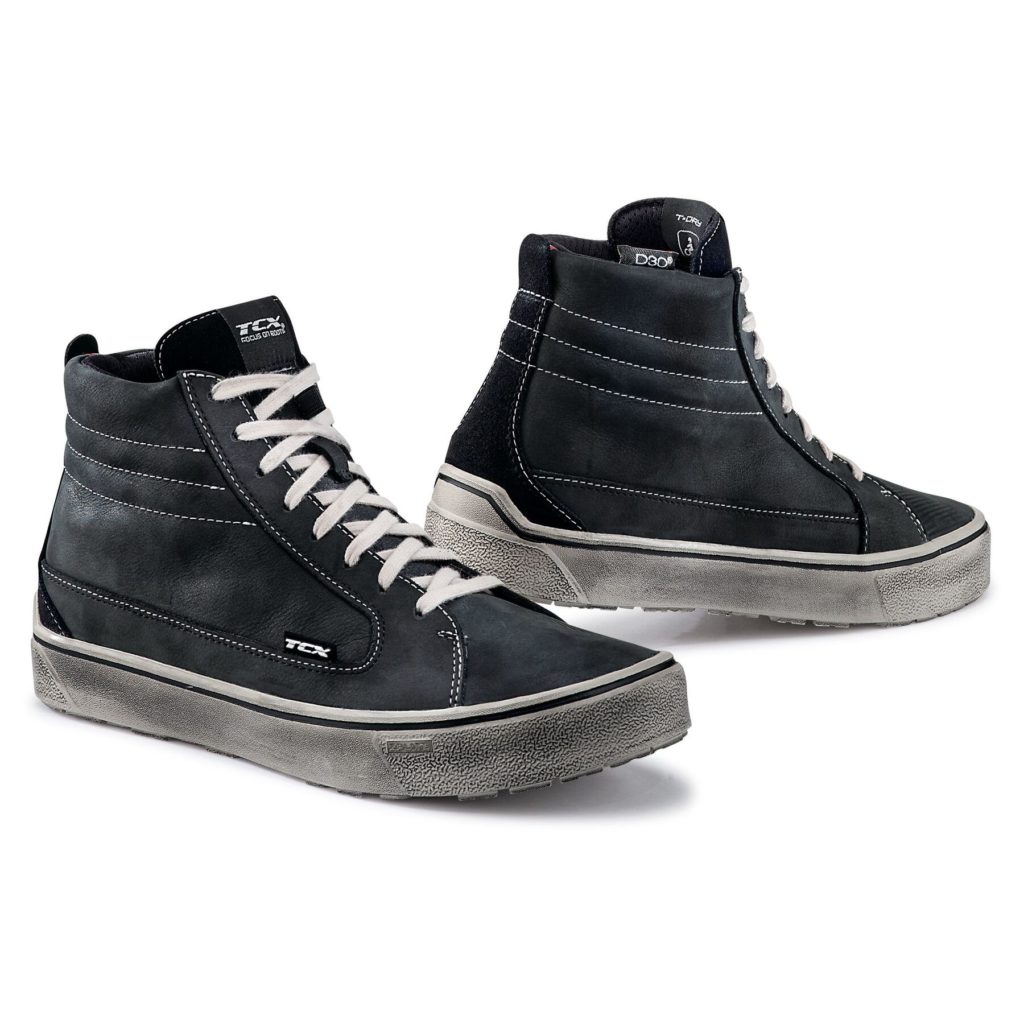
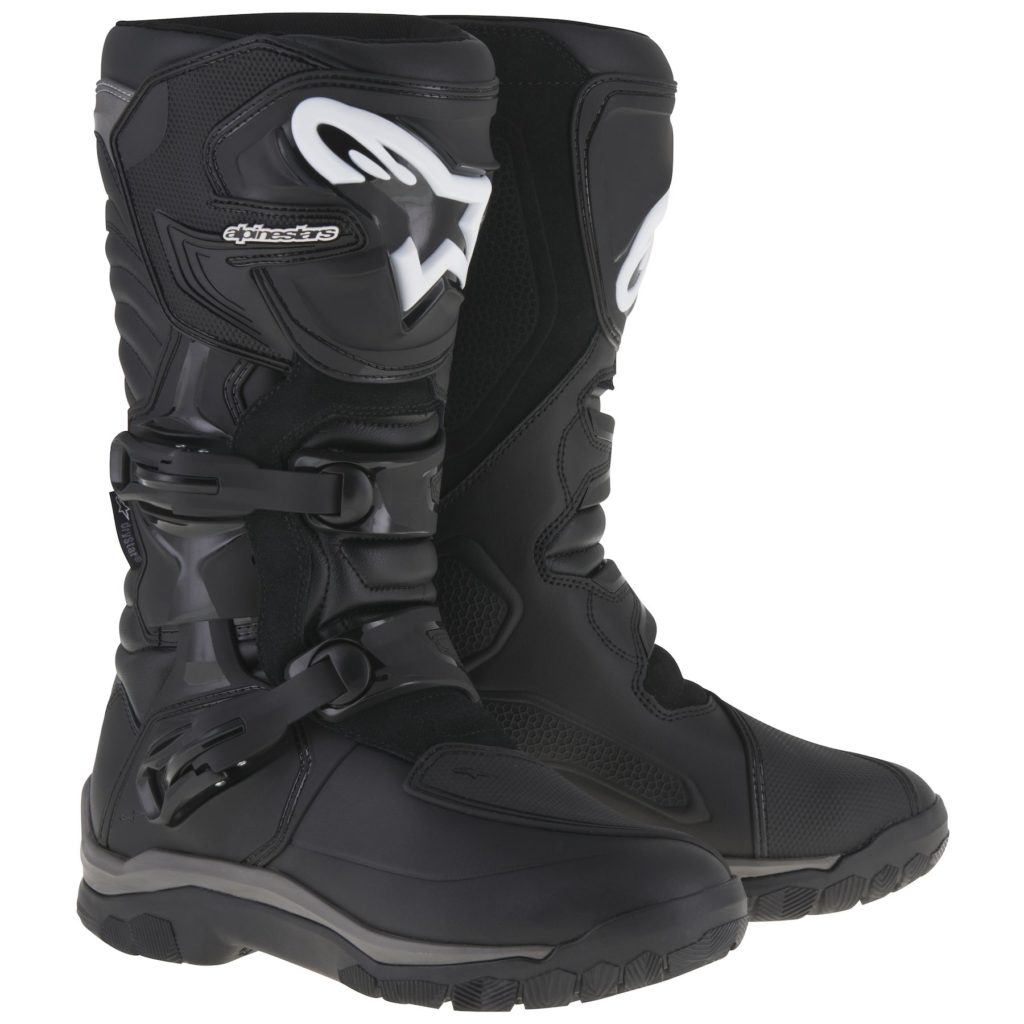
Boots can range from casually styled shoes & leather boots to more technical racing boots and highly reinforced off-road styles. Just like all the other riding gear, look for the right combination of protection, breathability, and weatherproofing to suit the riding you plan on doing.
Honorable Mentions
While not considered core riding gear, the next couple of items can do a lot to reduce fatigue and make the riding experience more comfortable.
Ear Plugs
Even with a full face helmet, the wind noise from riding can cause fatigue and eventually cause permanent hearing damage. While it might seem counter-intuitive, ear plugs will actually make it easier to hear traffic noises and helmet speakers (if you choose to use a Sena/Cardo Bluetooth unit) by cutting down on the wind noise. I spent my first several years of riding not using ear plugs, and I can honestly say that I’ll never go back.
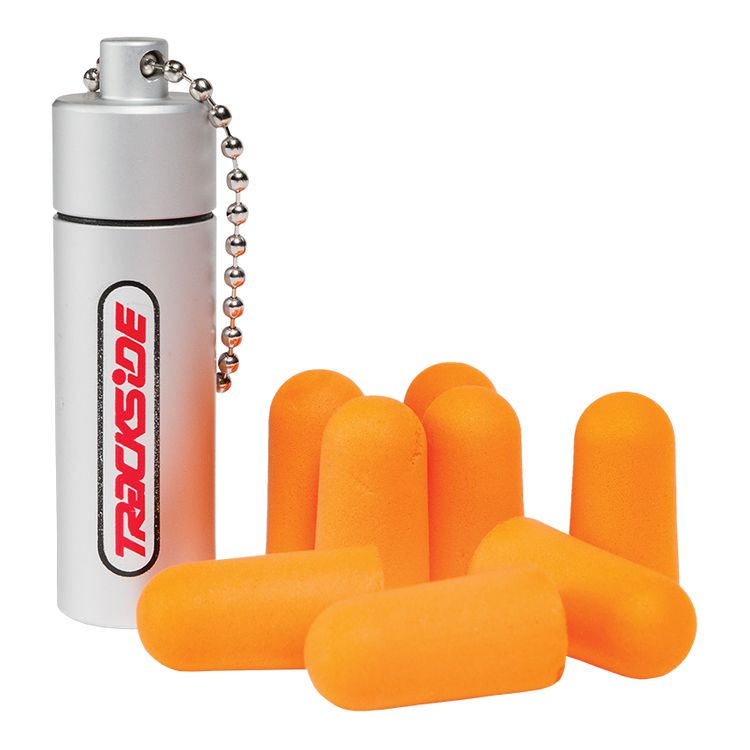
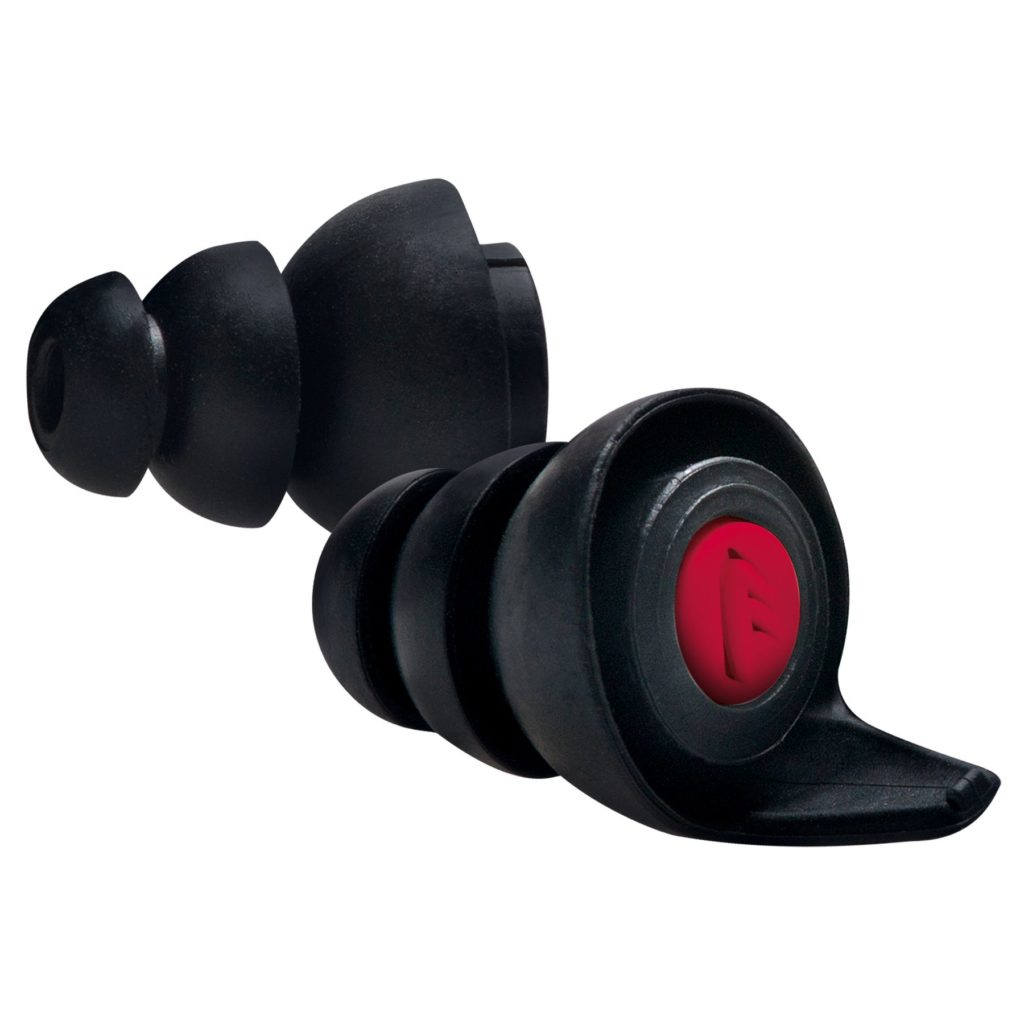
Cheap foam plugs that you can buy for pennies work well enough but tend to muffle everything at least a little bit. I think it’s worth it spending a bit more on concert-style earplugs that are better at preserving the fidelity of low-volume noises while effectively reducing wind noise to safe levels. Experienced touring riders will often shell out for a set of custom-molded ear plugs fit by an audiologist, but that’s more about all-day comfort than sound reduction.
Neck Roll
Neck rolls go by many names. Whether you call it a neck roll, neck gaiter, neck warmer, or anything else, it’s a simple sleeve fabric that you wear around your neck. The neck is generally left exposed by riding gear and, because all of the blood going to your brain (a lot) flows through your neck, this simple sleeve of fabric can make a world of difference in comfort. Almost every manufacturer or store sells a branded one, and it just might end up being the best $10-$15 you ever spend on riding gear.
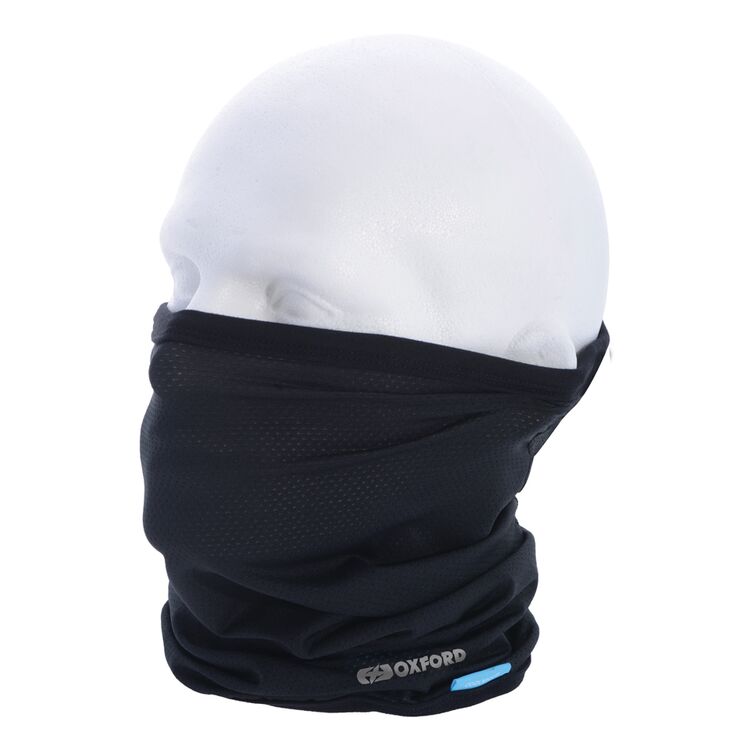
In the cold weather, a thicker (even insulated) neck roll will baffle the wind around your neck, keeping you from losing heat. You can even bring it up over your nose & face to help keep even more heat in from your breath. Just be aware that if you wear glasses it can cause fogging, so maybe avoid your nose.
In the heat, a thinner, light colored neck roll will keep the sun off your neck (a common area of sunburn for even fully-geared motorcyclists). If it’s moisture wicking, the neck roll can keep you even cooler by enhancing your body’s natural evaporative cooling process — you can even supercharge the cooling by soaking the neck roll in water when you stop. Pulling the neck roll up over your nose and mouth can also help filter the air when riding in dusty or smoggy conditions.
Neck rolls are also small enough that you can easily shove a spare just about anywhere and have an emergency towel, beanie, face mask, padding for souvenirs, etc.
Base Layers
While not an issue for shorter rides, the clothes you wear under your riding gear can make a huge difference in comfort on longer days of riding and especially on multi-day tours. Base layers include anything you’re wearing next to your skin: socks, underwear (long or short), and shirts. If you ask a backpacker about base layers, you’ll likely hear the old mantra “cotton kills.” Cotton is light and breathable when it’s dry, but it tends to retain moisture once it gets wet from sweat/rain. In hot weather, that can lead to heat rash and discomfort and in colder weather it’s a recipe for hypothermia. Staying comfortable is important for staying focused and riding safely, so consider alternative materials for your clothes once you start riding longer and further.
In hot weather, synthetic base layers or lightweight merino wool (or blends of both) help to wick sweat away from your body and dry fast, enhancing your body’s natural cooling process. Both synthetics and merino are anti-microbial, so they’ll resist odor if you’re packing light on a multi-day trip. In cooler weather, mid- and heavy-weight base layers trap more body heat to keep you warm, extending your comfortable riding time.
In addition to keeping you comfortable, wool and synthetic base layers have the nice side benefit of keeping your riding gear from smelling (or at least lengthen the time between washes).
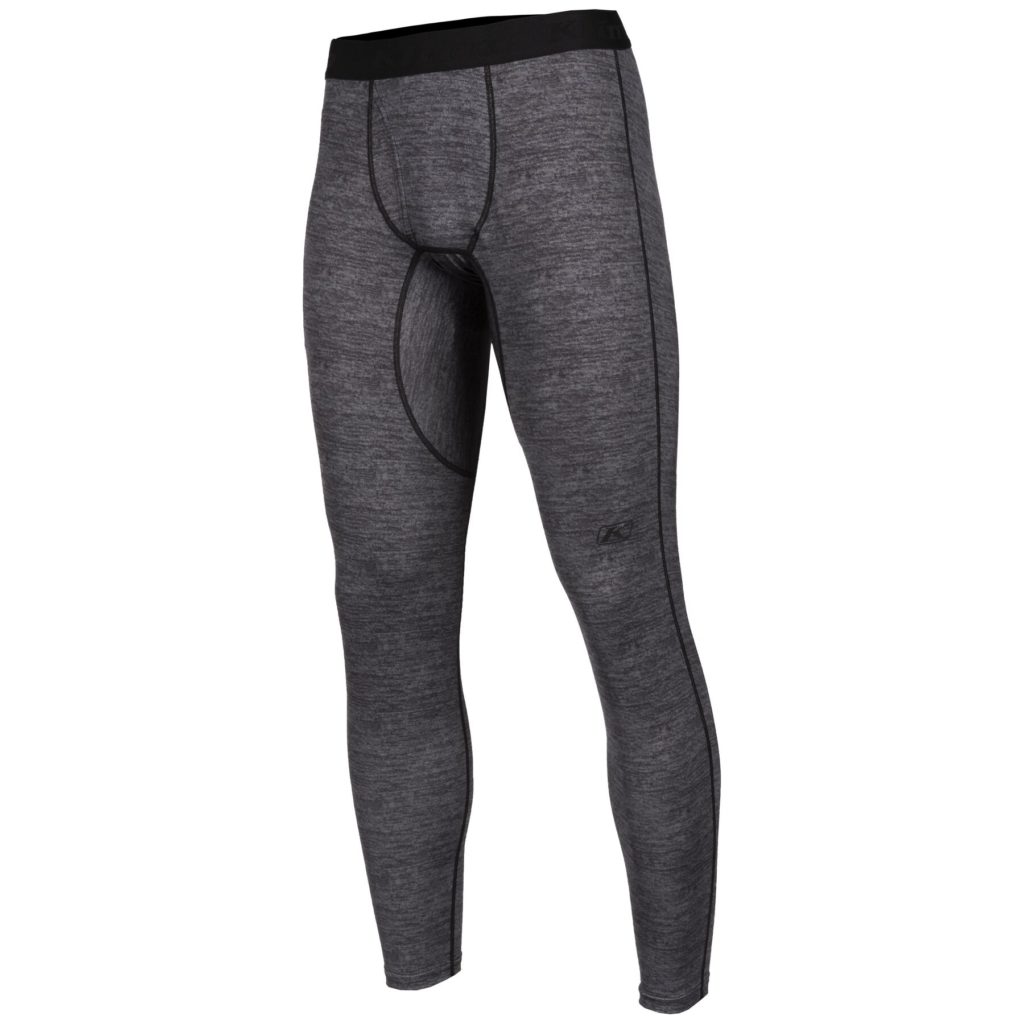
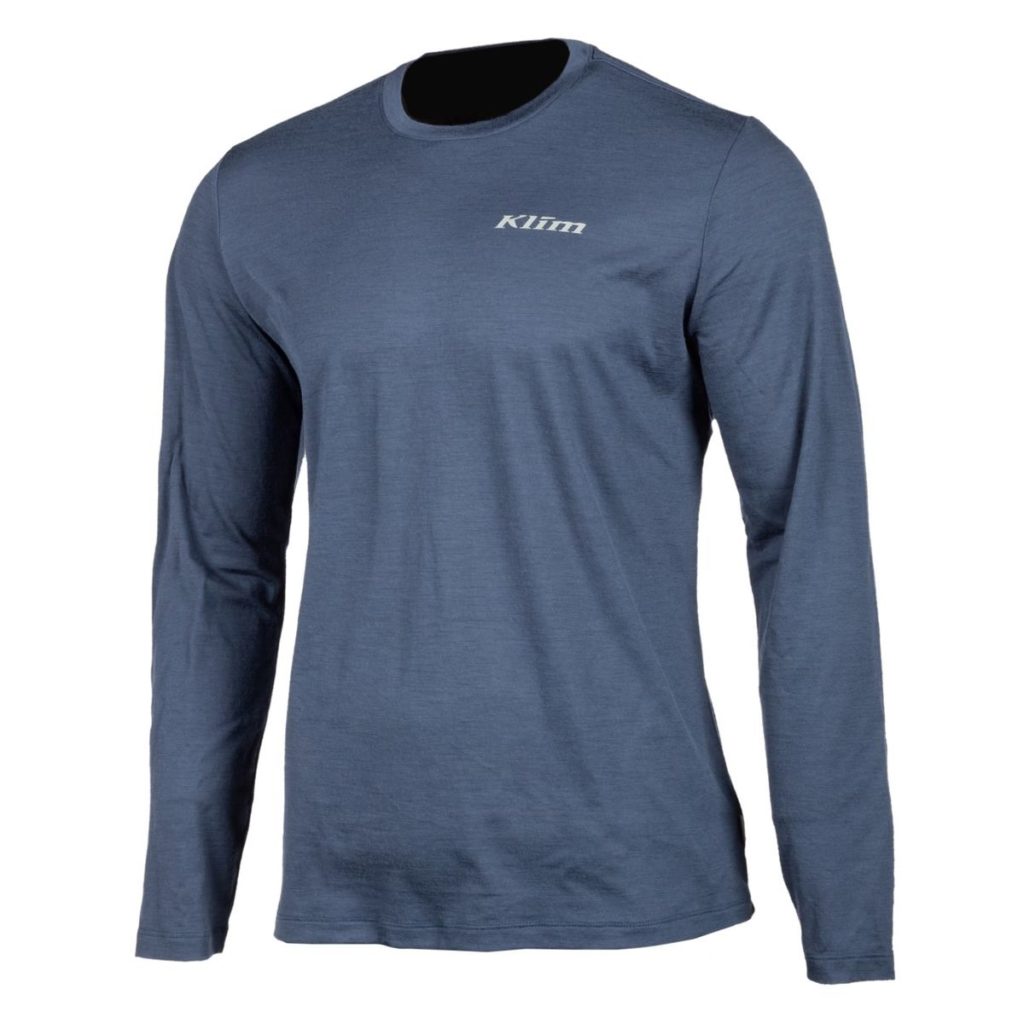
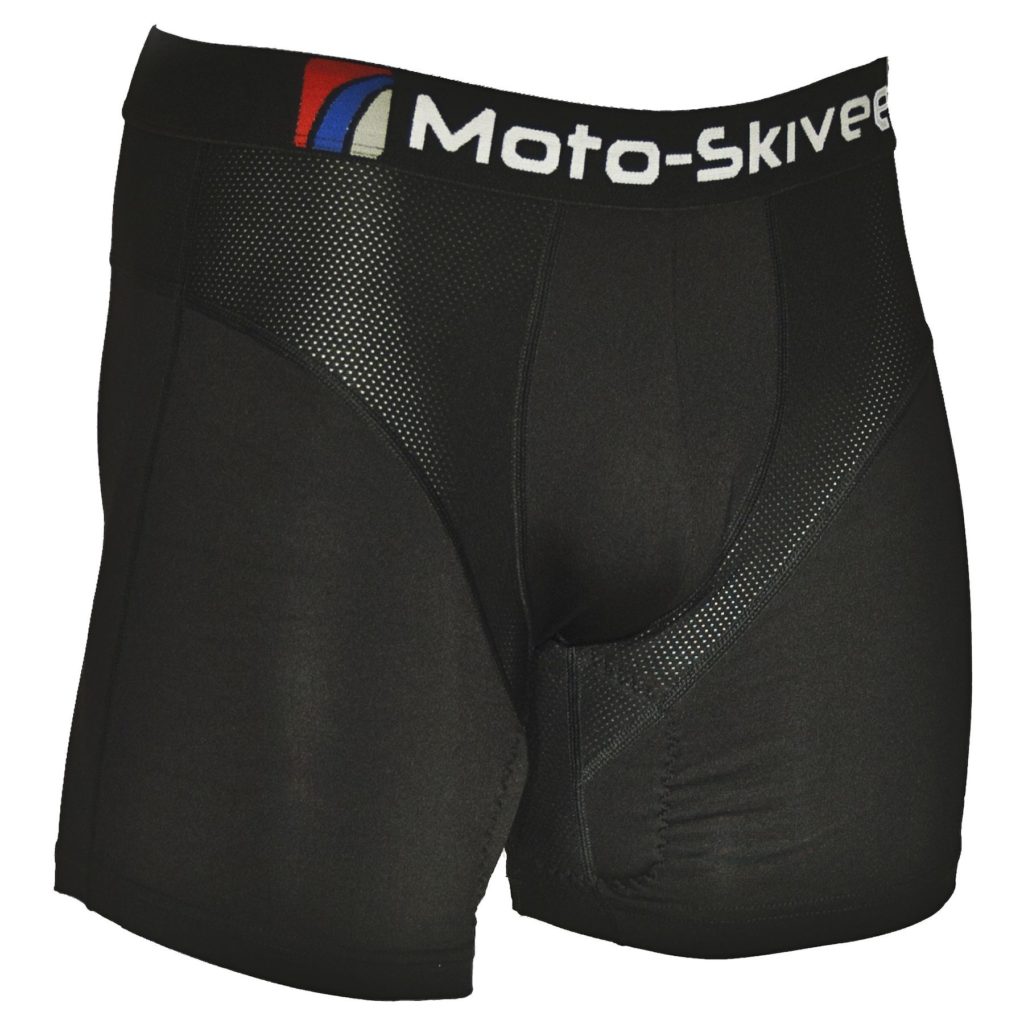
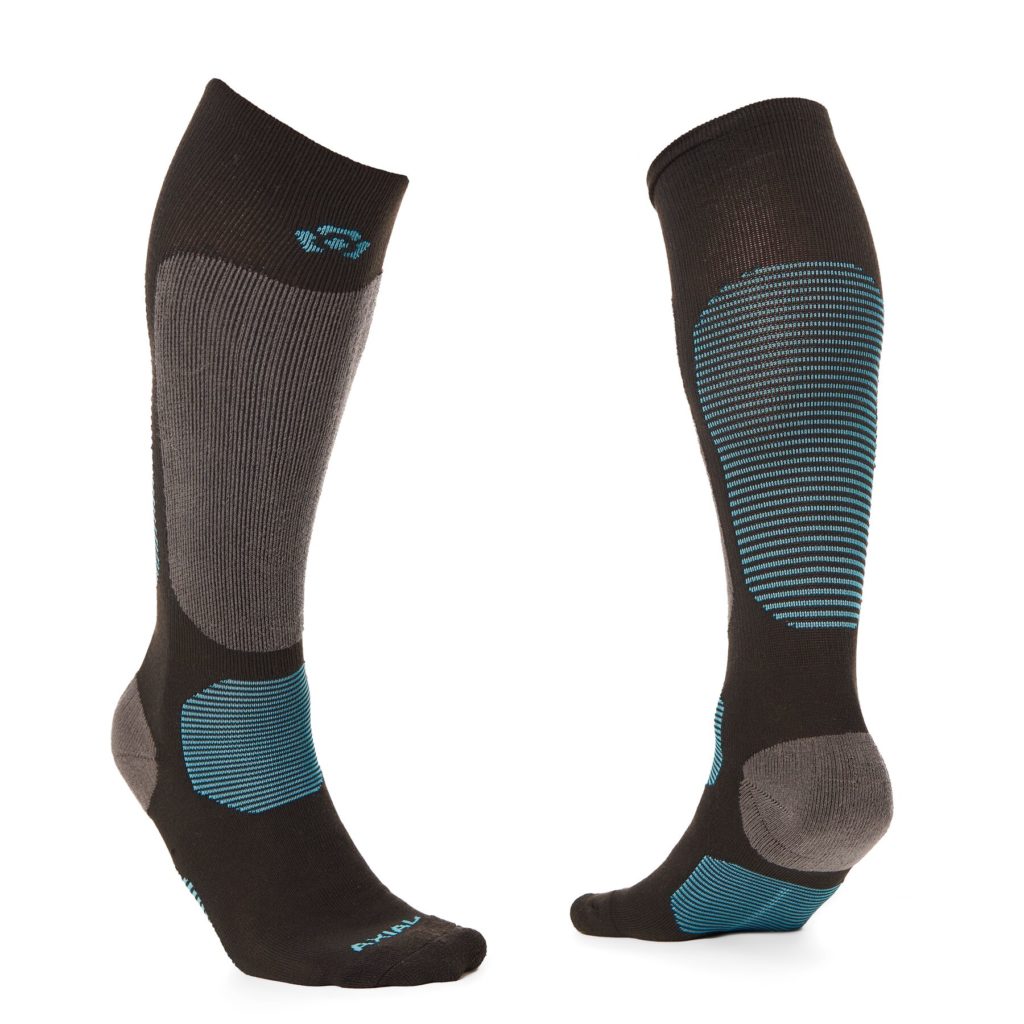
Most major motorcycle gear manufacturers make base layers that are designed with a mix of compression zones, stretch panels, and flat seams that are specialized for long days of riding, but you can still do pretty well using running, hiking, camping, or base layers from other sports if you already have them.
Extra Protection
In addition to the standard protective gear, there are a few specialized pieces of protective gear that you may want to consider depending on the types of riding you end up getting into.
Neck Braces
Originally from the off-road racing world, neck braces are starting to be adopted by touring and commuter riders. The basic principle is pretty simple: helmets are heavy (usually 3-4lbs), and in a crash the extra weight on your head can cause neck injuries as your head is whipped around. While that’s still preferable to a traumatic brain injury, the neck brace helps to mitigate the risk to your neck by limiting the motion of your head. The outer edge of your helmet hits the neck brace and the forces are distributed to the larger bones & muscles of your chest and back (similar to how boots protect your ankles by transferring forces to the larger bones of your legs).
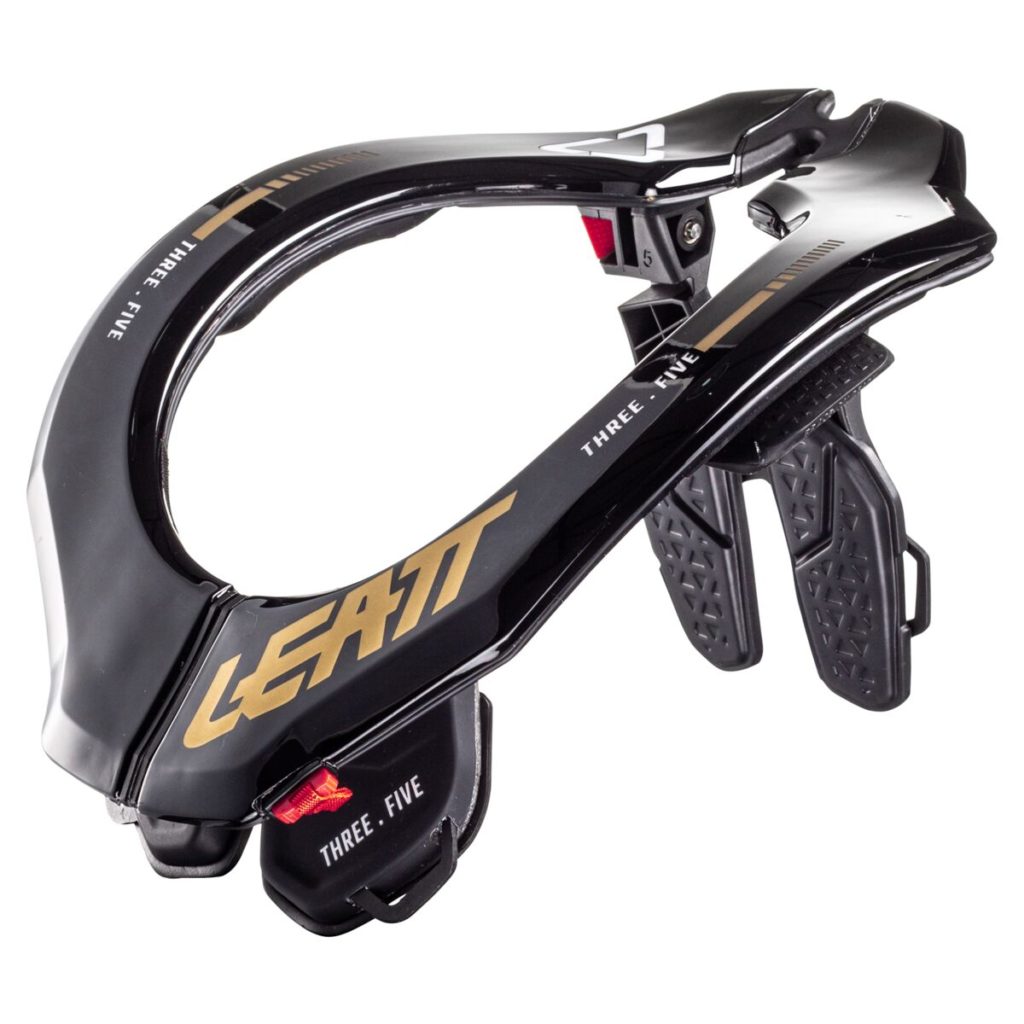
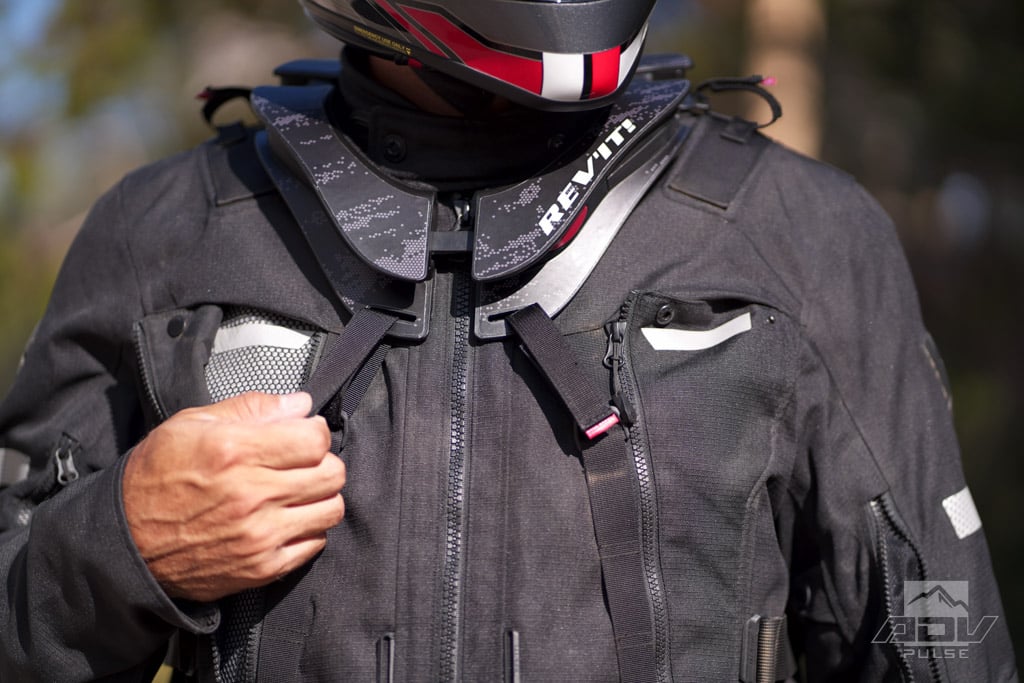
The downside of neck braces is that your head’s range of motion is limited. Some people, even racers, find this limiting enough to not bother with the brace. In my experience it’s easy enough to adapt to while riding, but I find it annoying when doing things like looking down to put on my gloves or clipping in my hydration pack. I tend to wear a neck brace for fast, off-pavement riding where the risk of crashing is high enough to justify the annoyance, but I leave it at home for street riding or low-speed, technical off-roading.
Airbags
Extending the idea of neck braces even further, airbag vests & suits are becoming increasingly available to riders. Like neck braces, the technology started in racing (in this case MotoGP and road racing, but it’s now being used for Rally Raid races like Dakar).
Airbag vests & suits use either a tether attached to the motorcycle or an onboard accelerometer to detect a crash. Once a crash is detected, CO2 cartridges are used to inflate the vest. The inflated vest limits neck/spine movement, like a neck brace, and provides additional impact protection for your torso. The vest and suits are fairly lightweight and unobtrusive, either worn on top of your regular riding jacket or even integrated inside of it.
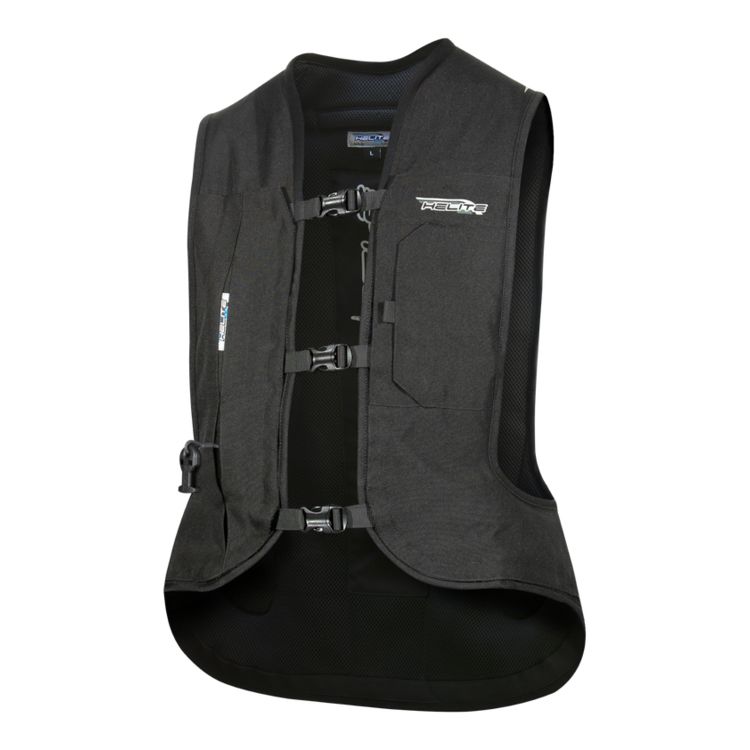
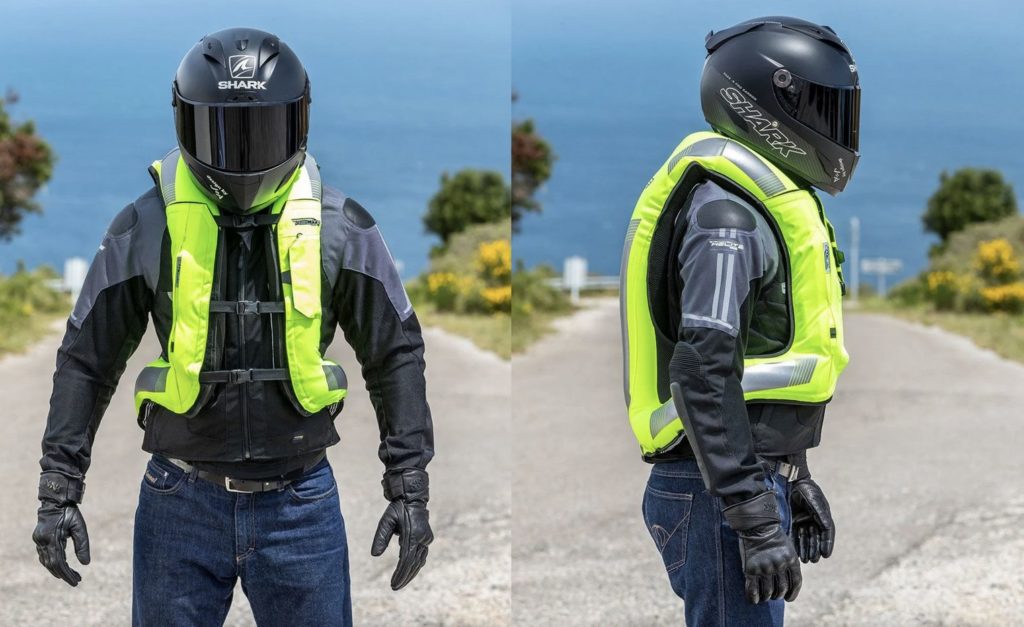
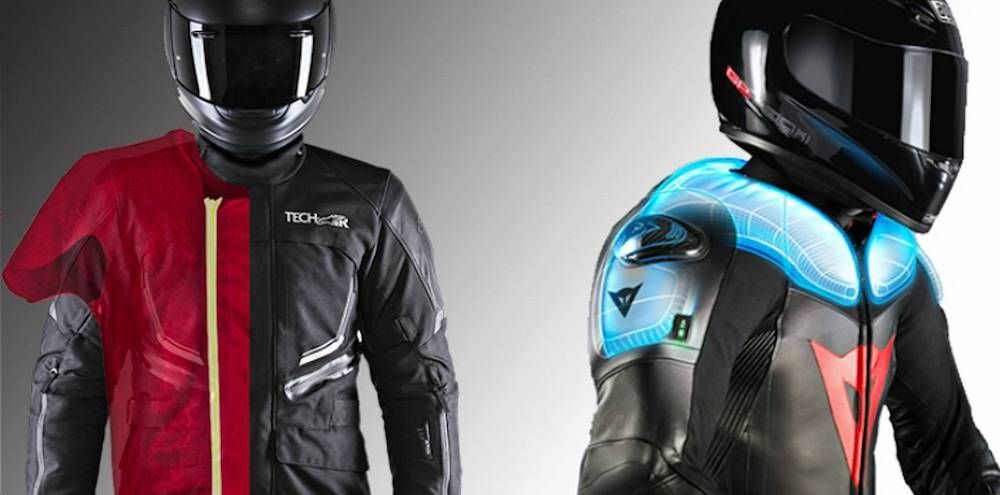
The downsides? The tethered versions require you remembering to tether them to the bike, and they can deploy even in a low-speed drop. The electronic versions require you to remember to charge the batteries — not an issue for the professional races they were designed for, but something that’s easy to miss as a commuter or casual rider. Both types of vests/suits are still quite expensive for the everyday rider, with some models even requiring a subscription service to work. Once deployed, most airbags need to be sent back to the manufacturer to be inspected and recharged with compressed gas.
Standalone Armor / Armored Base Layers
While standalone armor and armored base layers are more common for off-road riding, some street and adventure touring riders prefer to this style of armor to armored jackets & pants. Standalone armor can keep armor in place better than pockets in jackets & pants and it allows greater flexibility in choosing your outer layers or mixing-and-matching between armor and jacket manufacturers. Standalone armor is often the only way to get hard armor and/or chest armor, and can be a great way to reinforce your knees since knee-armor pockets in pants aren’t always perfectly placed. These types of armor should be worn under abrasion-resistant riding gear for street riding.
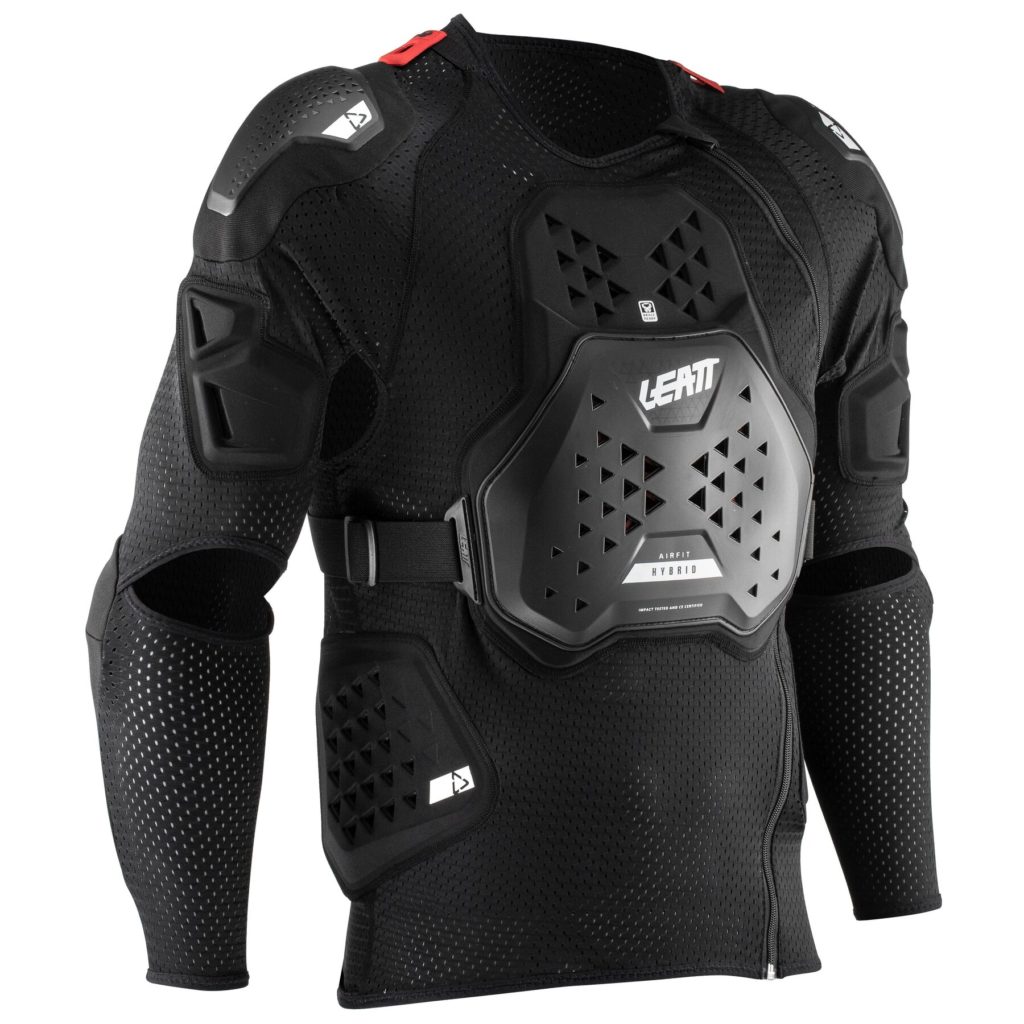
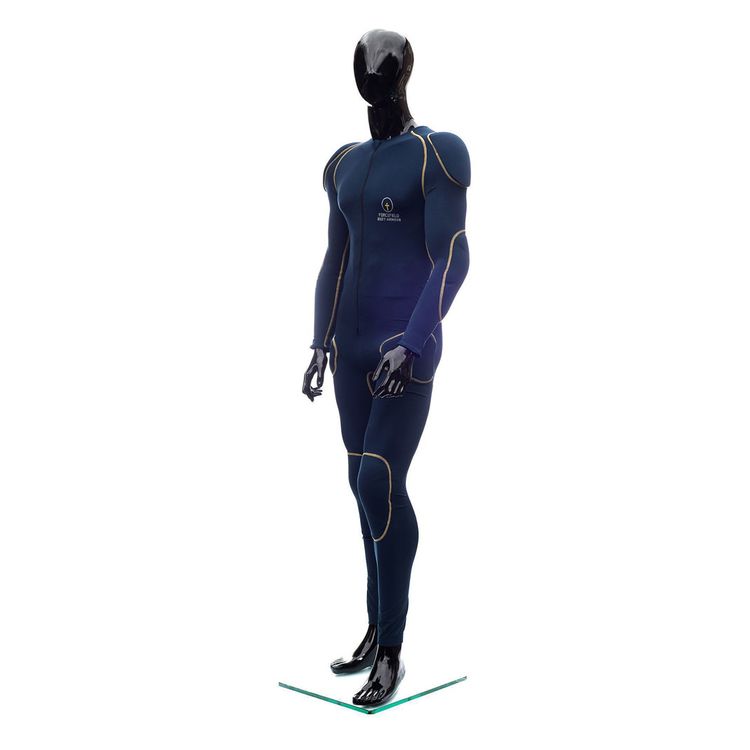
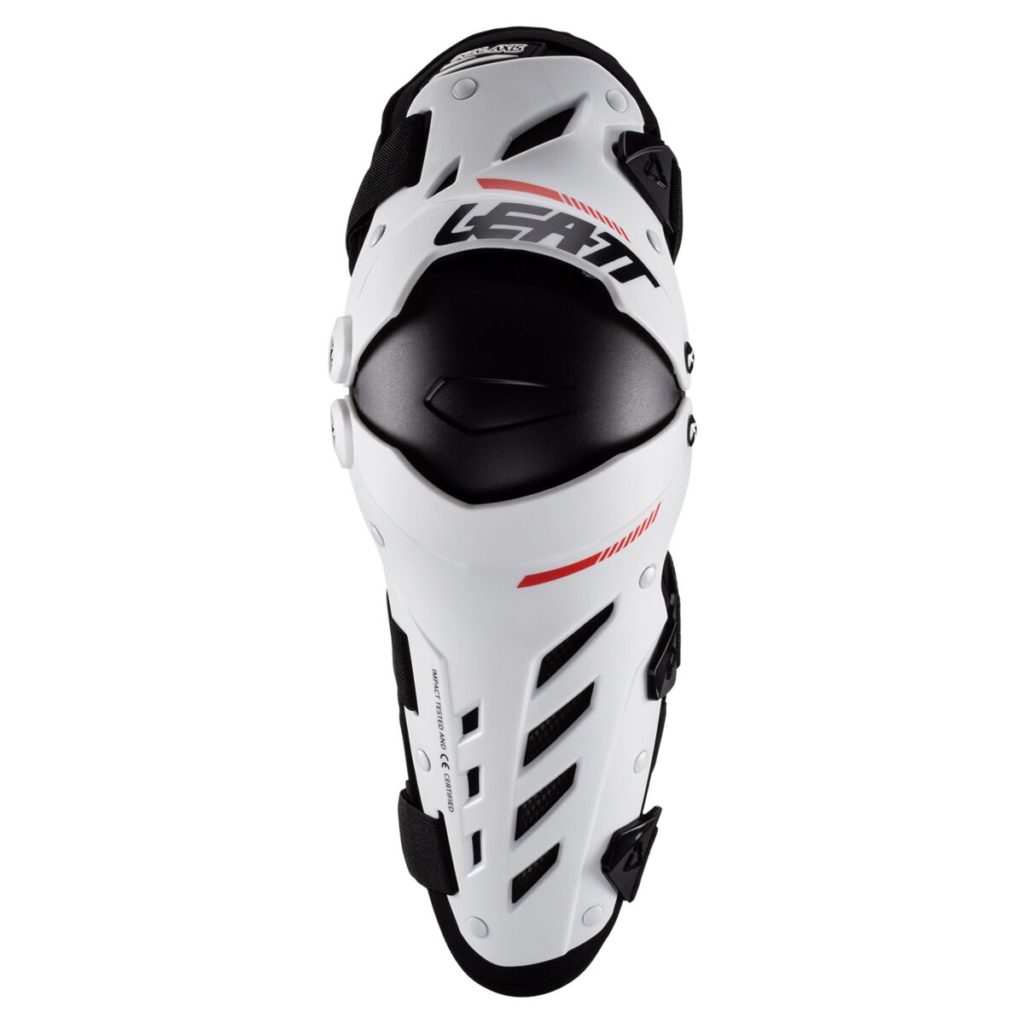
There are riders who choose to just wear standalone armor without jackets & pants in hot weather, which I do not recommend. This can be a fair trade-off in the woods, but most standalone armor typically has little-to-no abrasion resistance and will shred in a crash.
Knee Braces
As discussed above, boots protect your ankles by transferring forces that would injure your ankles up to the stronger bones in your leg. Motocross and other off-road racing boots extend all the way over the calf and have the additional protection of rigid, hinged ankles and reinforced shin guards. While this is great for protecting the lower legs, it can have the side-effect of transferring crash forces all the way up to our fragile knees. Knee braces are rigid hinges that attach above & below your knee and protect them by further transferring impact forces from your boots, plus any other knee impacts, to the even stronger femur.
Knee braces are even considered medical devices, so you may be able to offset some of their cost by using your insurance. Fit is especially important for knee braces, since their rigidity means they can be painful if they don’t fit perfectly on your thigh and calf. They’re bulky, expensive, and only really necessary for dirt bike, dual-sport, and adventure riders who are really pushing their limits. But if that’s the direction you end up progressing, or if you’re a casual off-road rider who has a history of knee problems, they’re worth knowing about.
